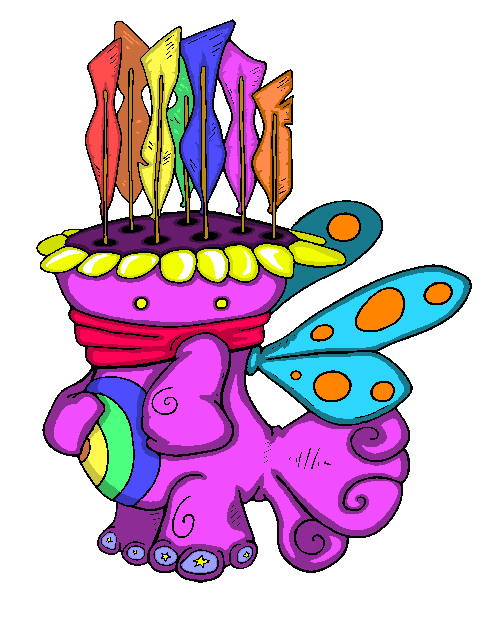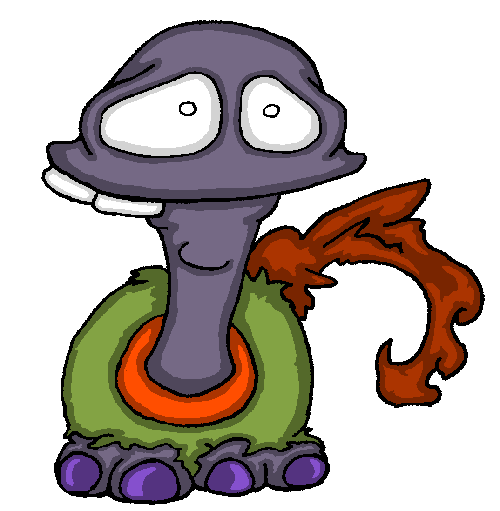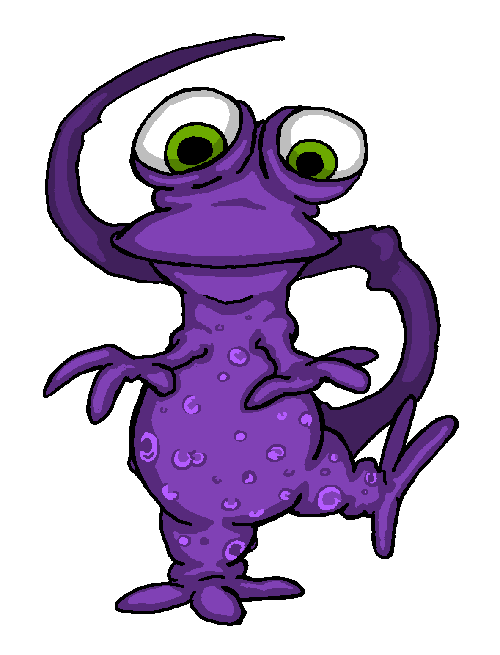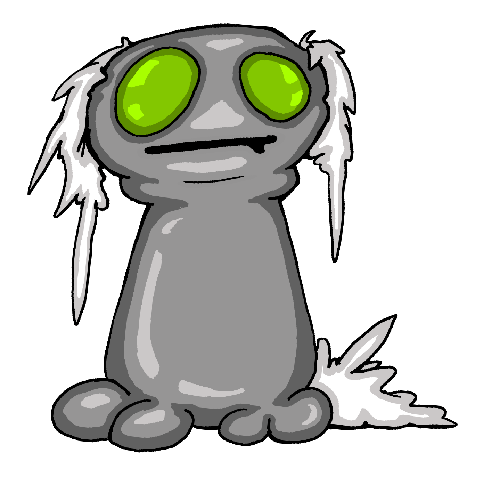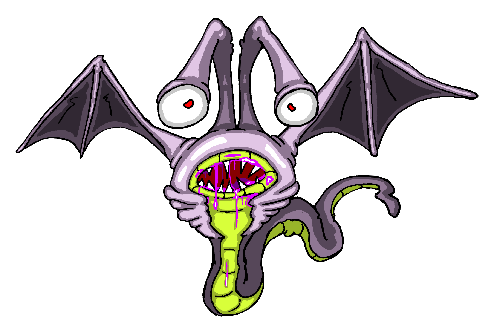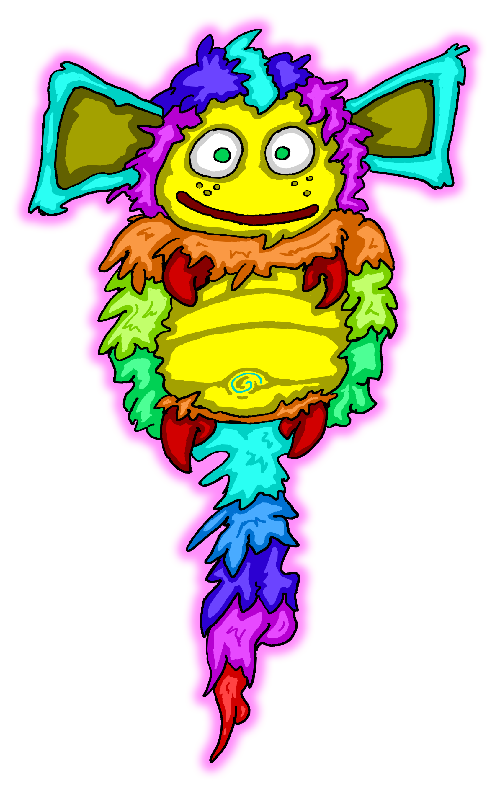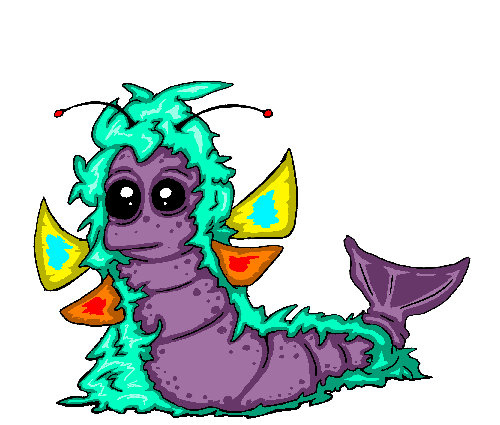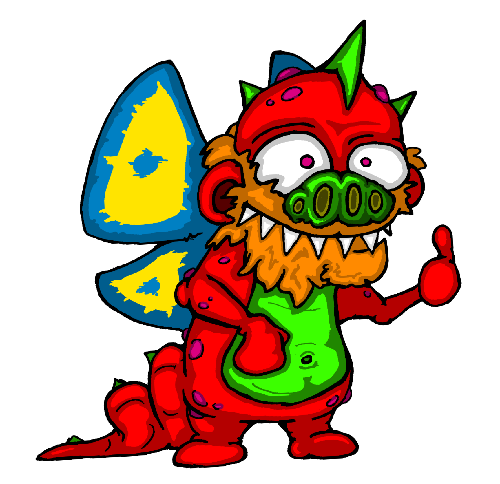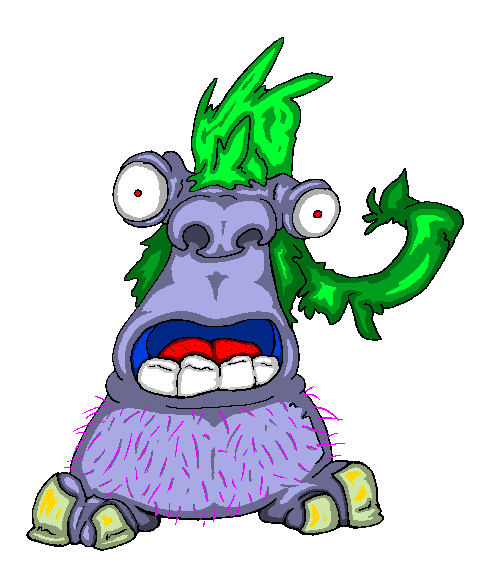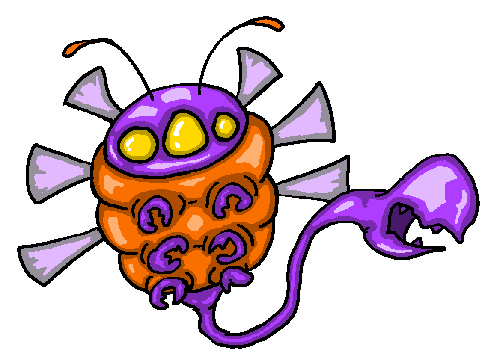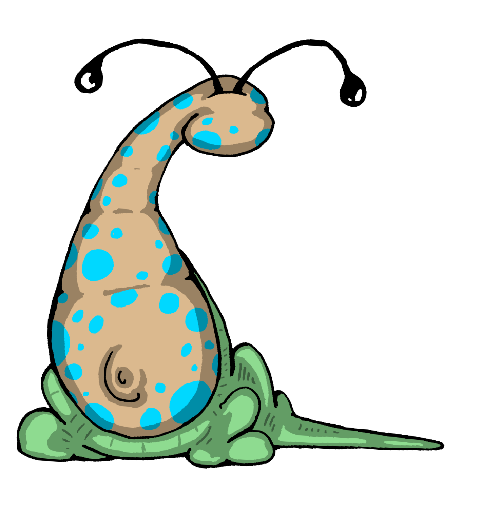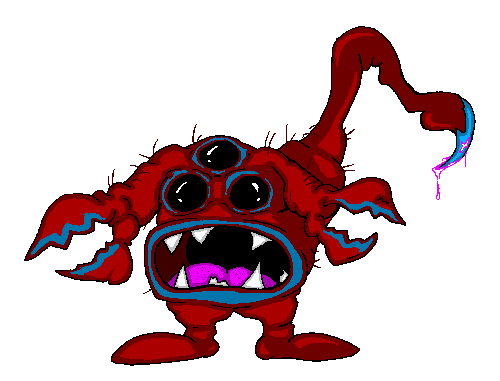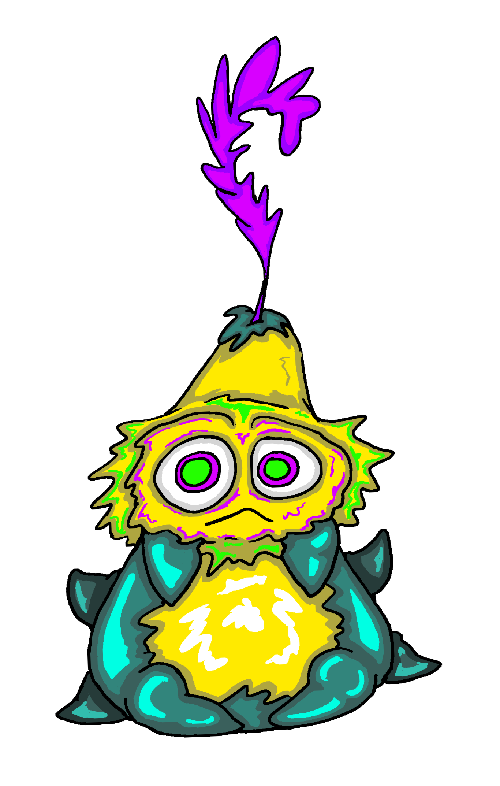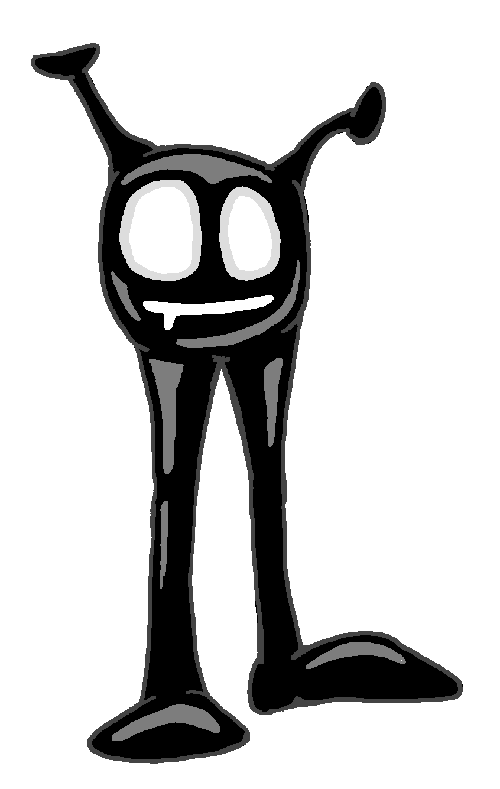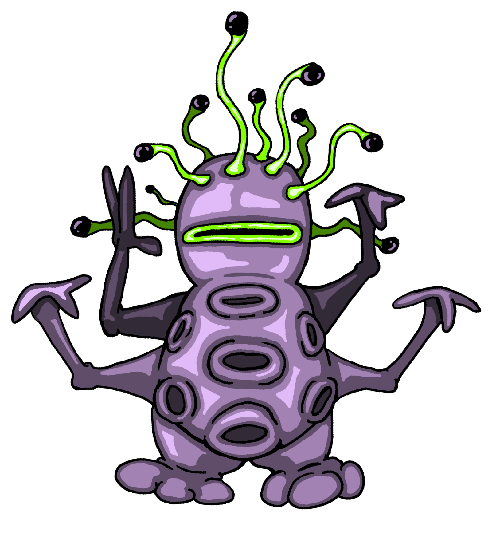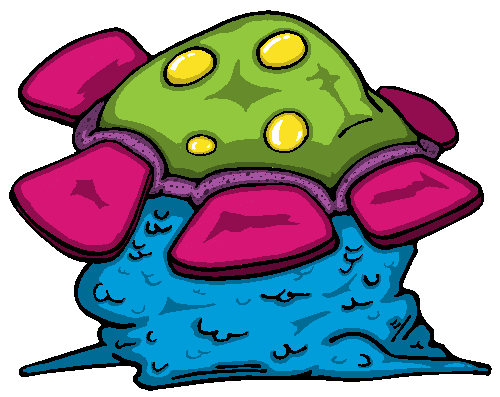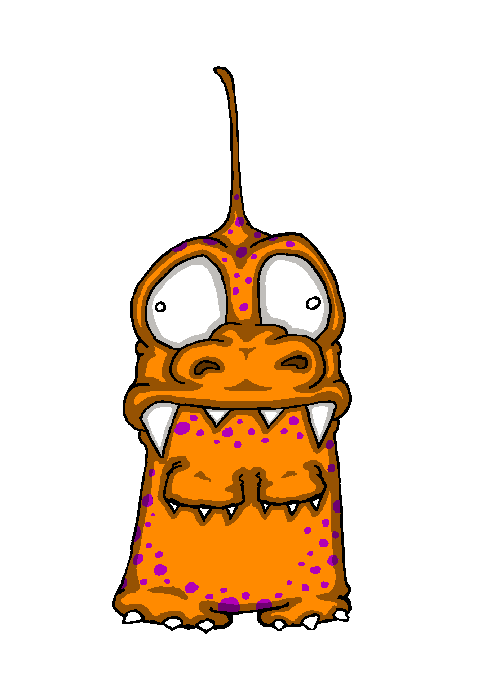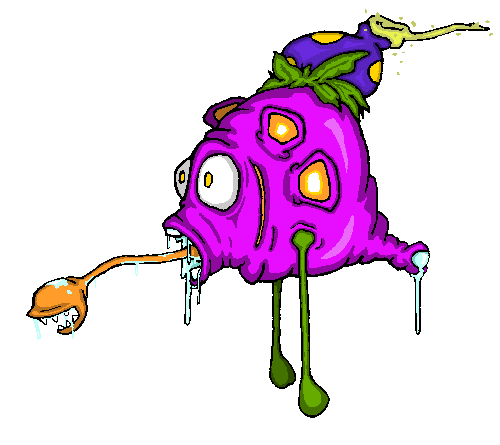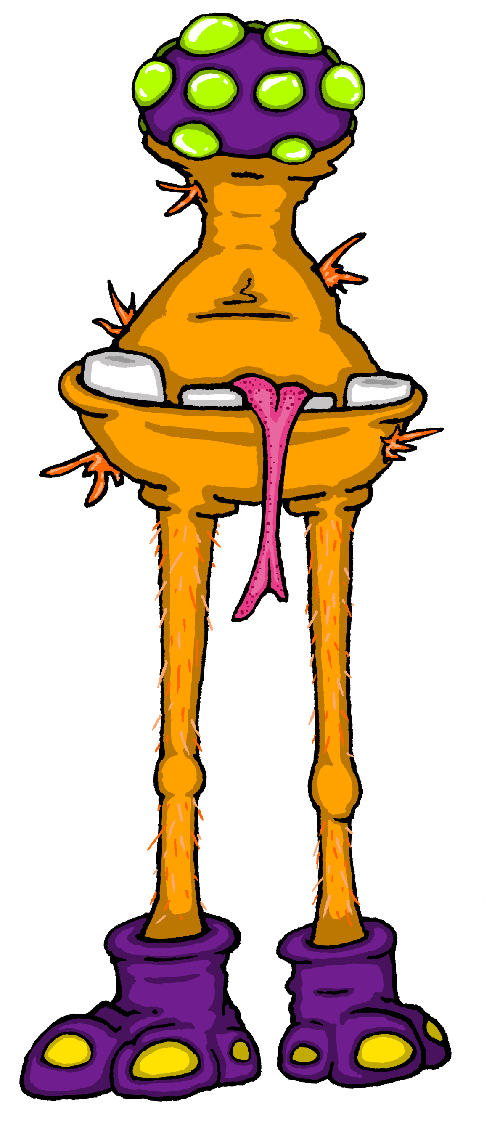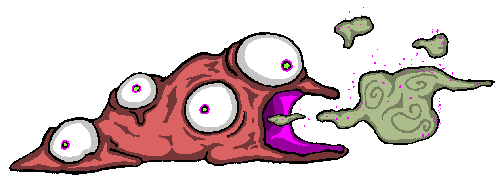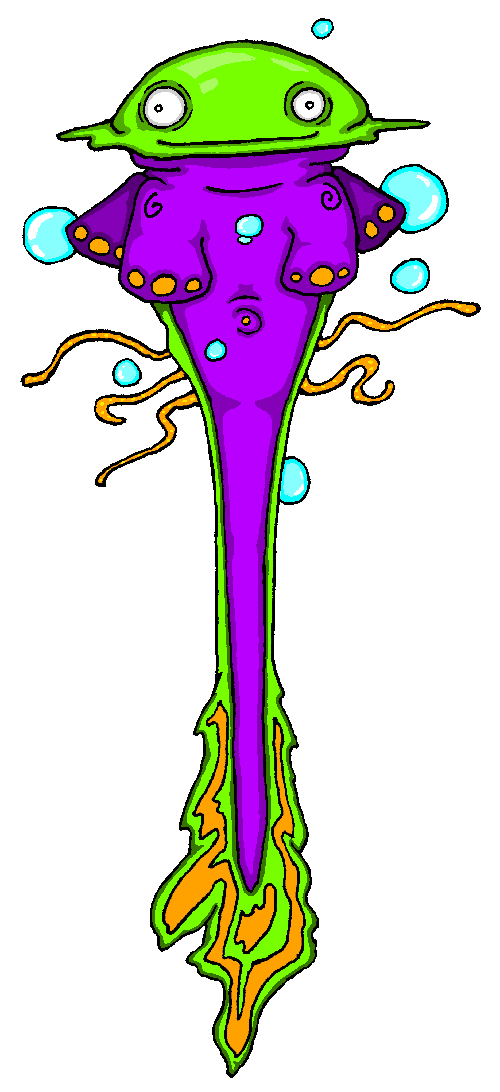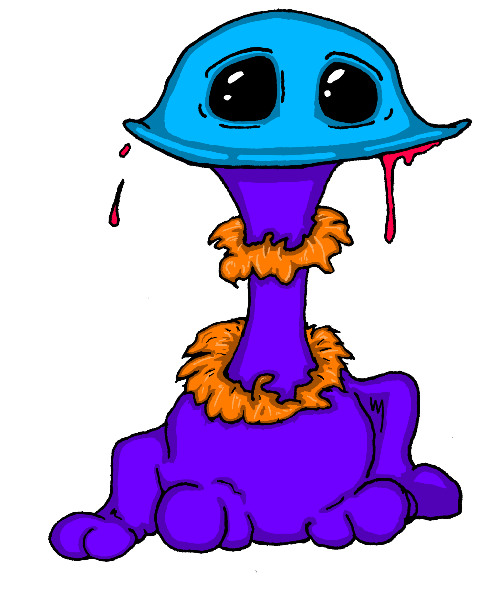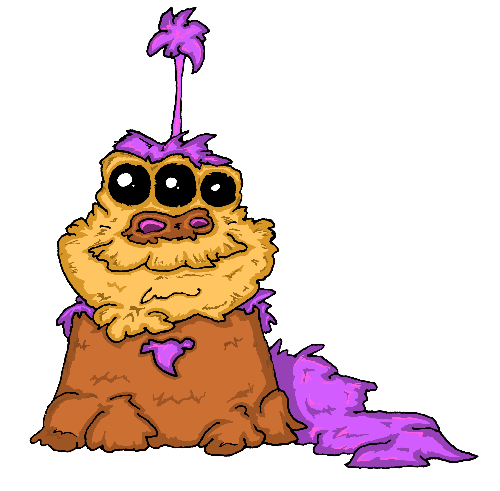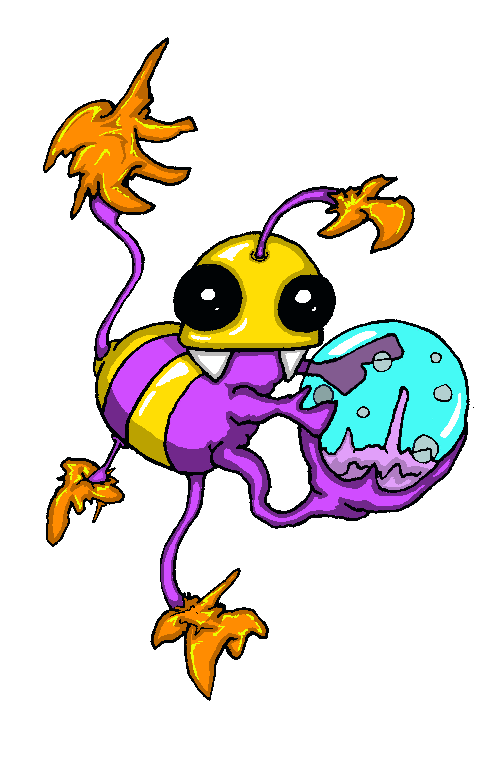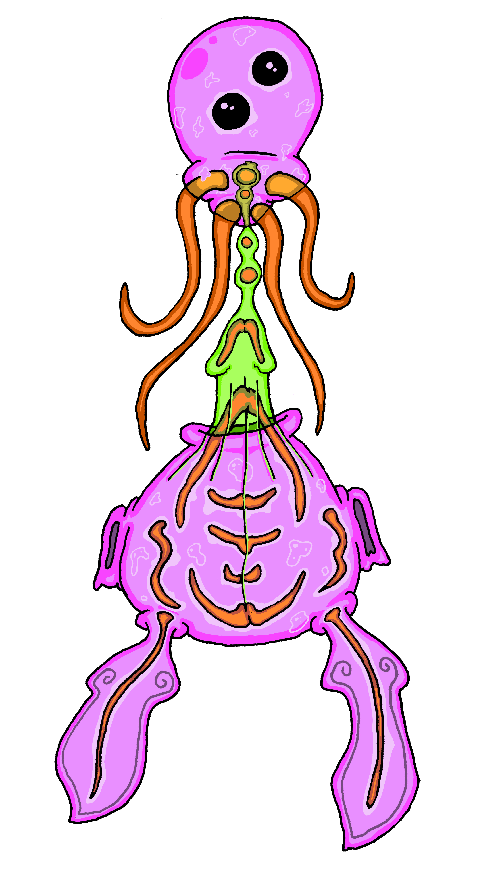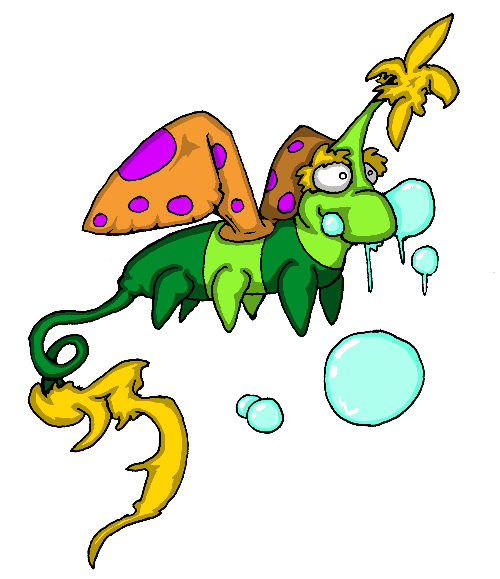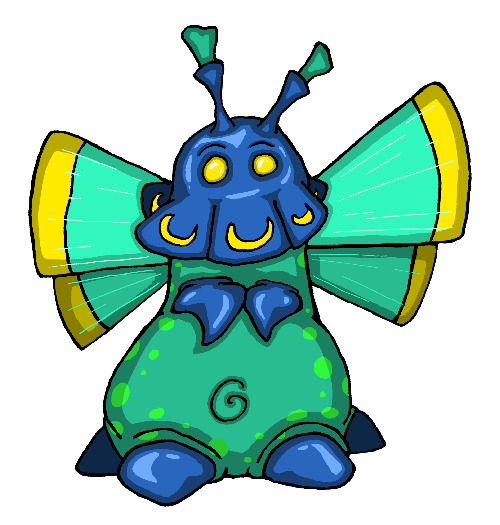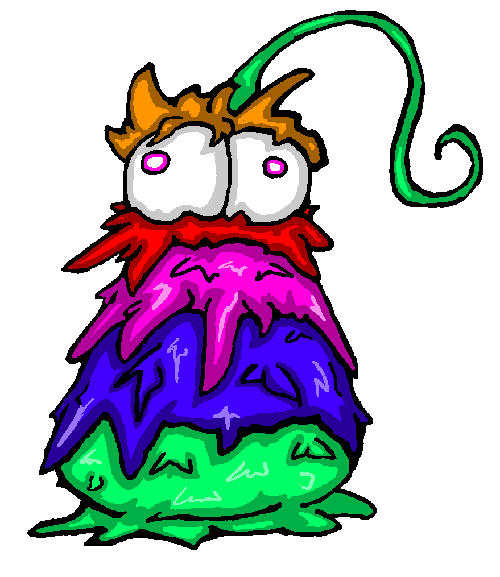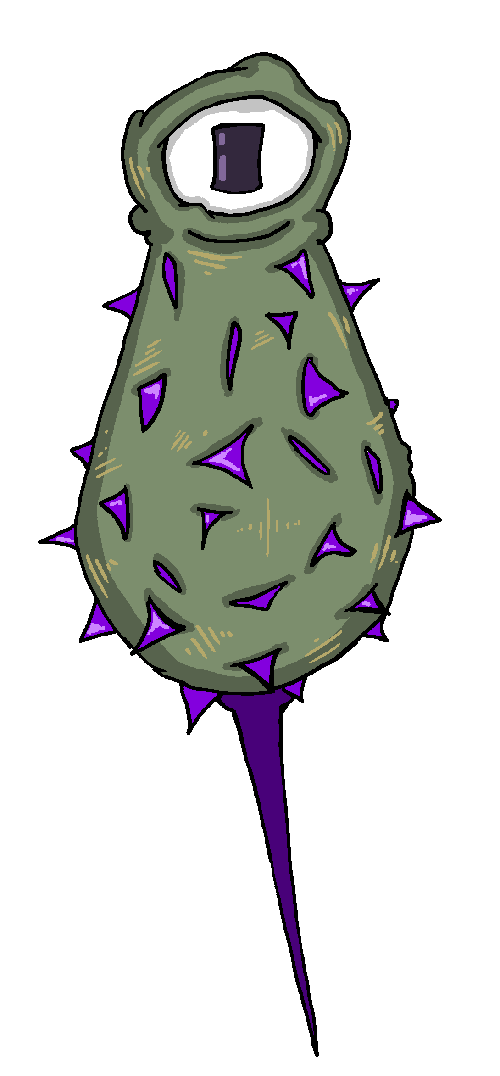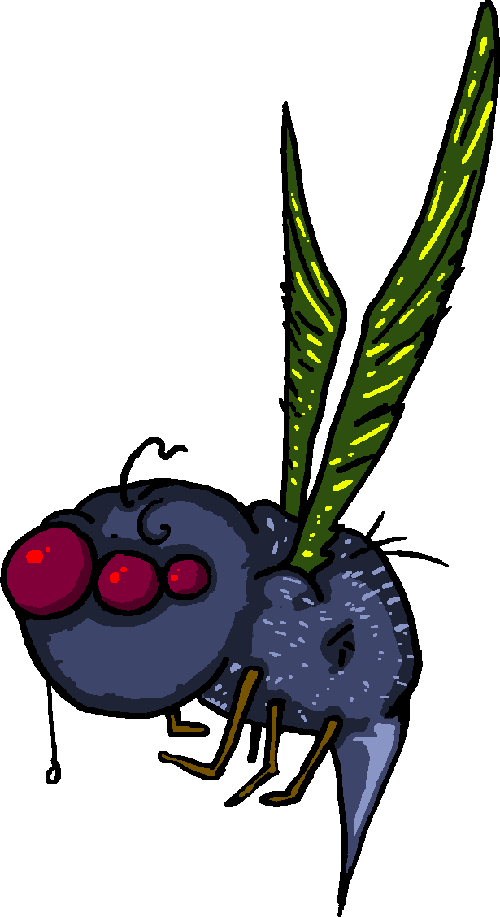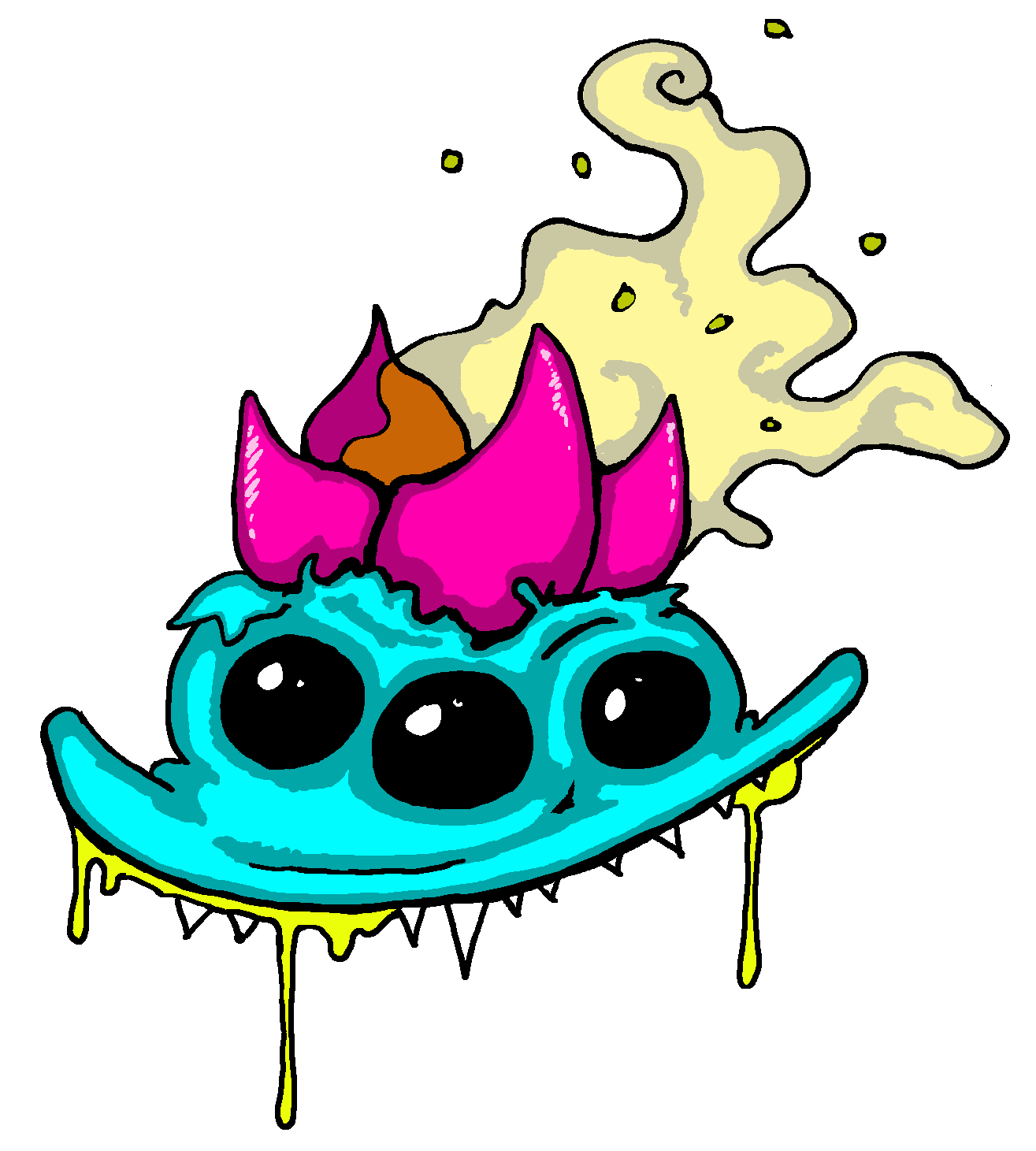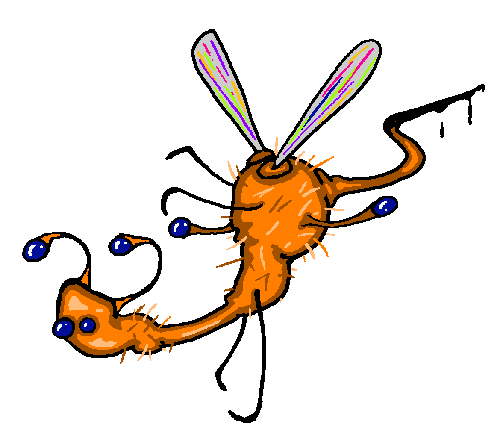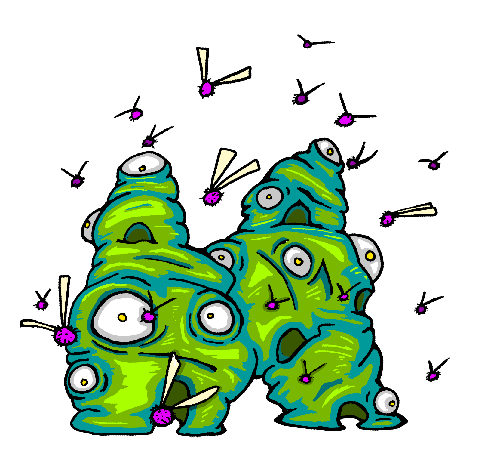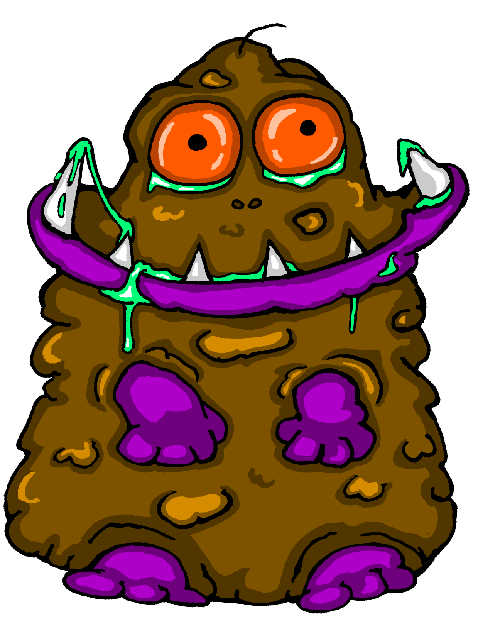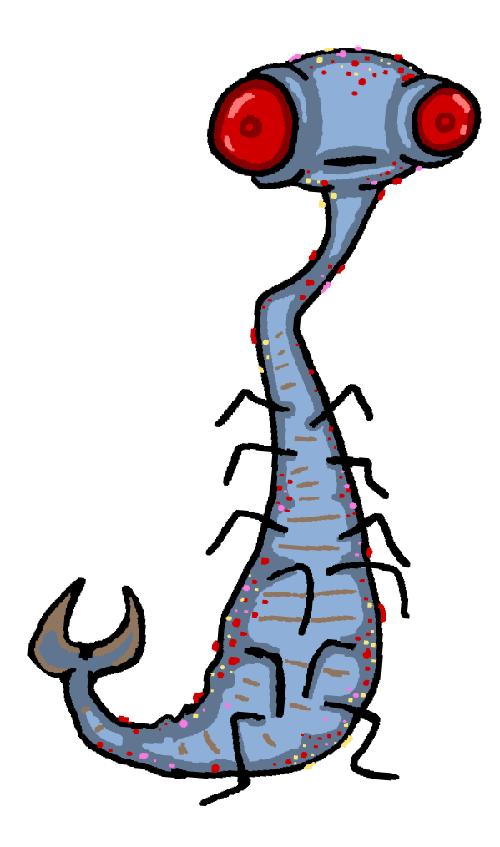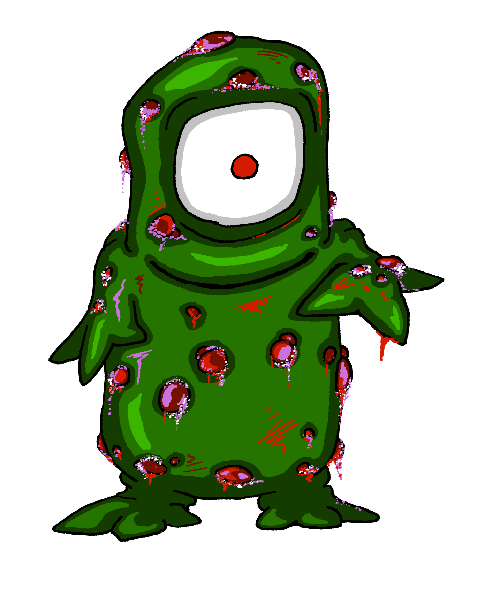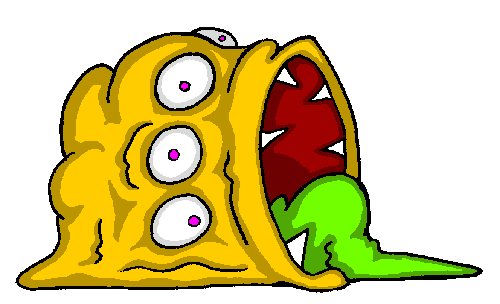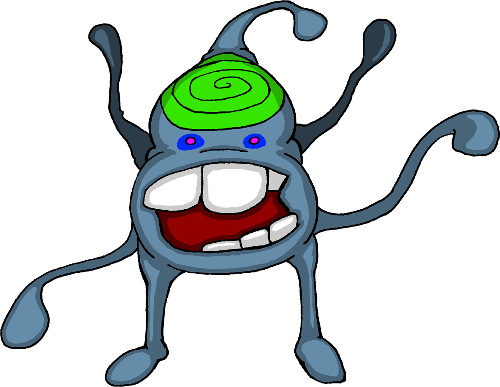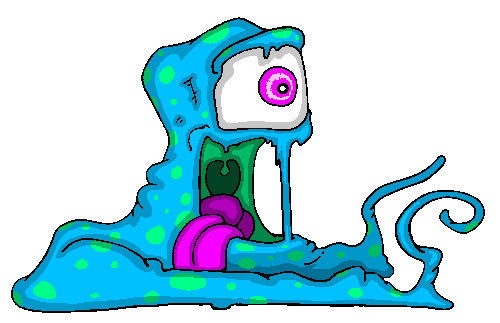

Description
The Buggo: a clumsy, bumbly, bottom-heavy creature that features eyes which point in different directions and dwells in swamplike environments. At an average of 10 pounds and 2 feet tall, they are light for their size. Buggo will charge in the light and glow in the dark as a way to attract predators, which seems like a terrible idea - except that this is the only way for Buggo to reproduce. This is Buggo's chief desire. While being digested, Buggo transforms into a fungus that sustains itself on the digestive juices of their host. This process rapidly reproduces the Buggo spores, and thus the next generation of Buggo are born. To help ensure that the process is less likely to be interrupted, any creature that consumes a Buggo becomes more actively inclined toward its own death.
Buggo

Notes: Tasted awful, texture rubbery, makes me want to kill myself. Also, there are apparently Buggo babies in my stomach, so I guess I’m a father now!
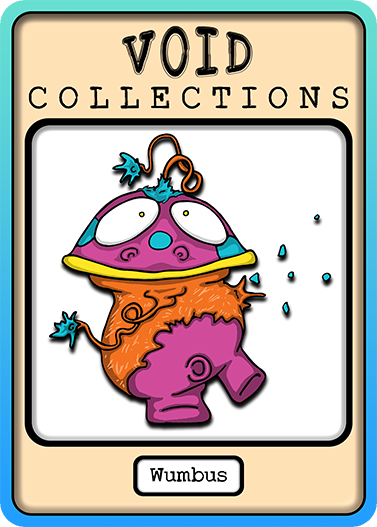
Description
The Wumbus is a simple creature, often mistaken for a mushroom in its natural environment. They spend most of their lives in a state of hibernation, drawing sustenance from the soil they stand in while enriching it. Very occasionally, when seasonal temperatures reach a specific degree of warmth, they become much easier to spot as they begin to "wumbus". What begins as an ungainly gait soon launches them into a spiralling dance, twirling as they wander. They expel spores with every heavy step, and a cacophony of airy flatulence erupts from a culture of Wumbus wumbusing.
Once they have collided with sufficient quantities of spores from another Wumbus, their path suddenly reverses course and they return to their original position to gestate. Given the chaotic nature of their movements, it is unclear how Wumbus manage to retrace their steps - or even find each other in the first place. One must be cognizant of the shifting seasons when in the domain of the Wumbus, as inhaling the miasma of their spores causes the rapid rupture of internal blood vessels. Prefers areas with few rocks and softer soil.
Wumbus
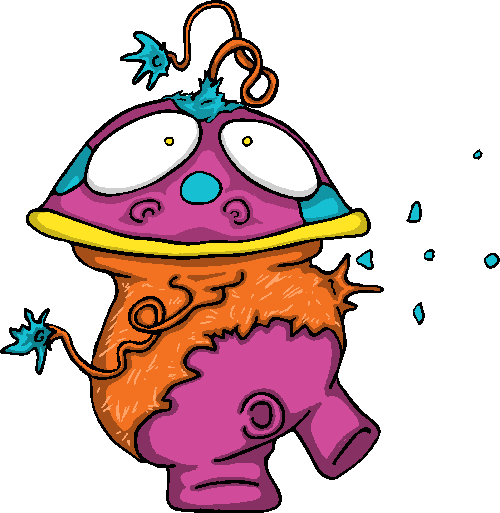
Notes: You can just get normal mushrooms for cheaper. Plus normal shrooms don't make eye contact while you cook them.
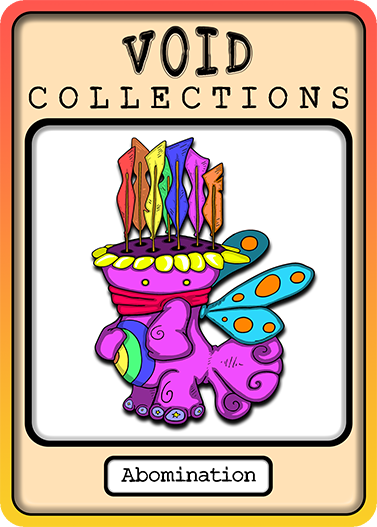
Description
Frolicking in grassy meadows among the flowers and the butterflies is an unparalelled predator: the Abomination. Let not its colorful appearance draw you in. Should you catch sight of it for more than a brief moment, you will quickly become enthralled by its shuffling feathers and the endlessly shifting colors. It is unclear whether its wings give it flight; it is clear, however, that the frequency of their fluttering dampens all sound around it. This creates a pocket of uncomfortable silence. Some say they felt its presence in the shifting air; others recall a comforting scent washing over an inherent sense of impending doom.
Despite numerous attempts to study the Abomination, no one has managed to document how exactly it consumes its victims. Regardless, the psychological effects are apparent, as those who have physically escaped its predation are left lacking... something.
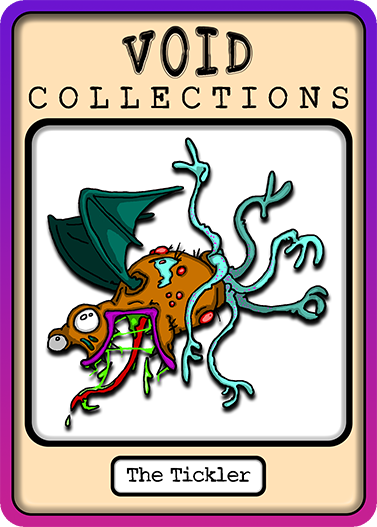
Description
If you hear the cackling of The Tickler, it's probably too late. It's also probably not a big deal. The Tickler will tickle you relentlessly. It's goal is to distract you so it can get what it wants: your trash. Though its teeth may look threatening, they'll only bite if you fight back - or if you startle it. This thing is about the size of a coyote, with six omnidirectional appendages, so fending it off can be a challenge and often isn't worth it. Just give it your garbage.
The Tickler's primary strategy is to drool all over its meal to break it down for easier digestion. It is most commonly encountered in trash-filled alleyways, dilapidated buildings, or the downtown bus depot. Solitary but not especially territorial, they nest in garbage cans and dumpsters and scavenge opportunistically.
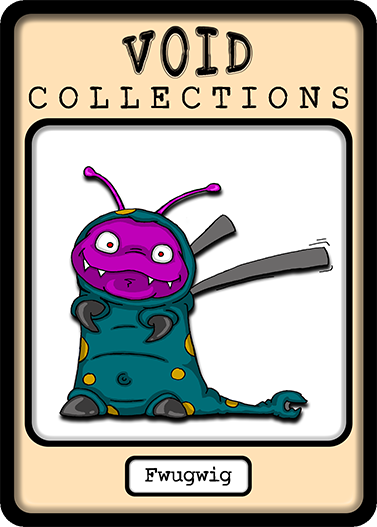
Description
Fwugwigs find themselves at home in woodland settings, burrowing into fallen trees to carve out dens for their large families. For fwugwigs, family comes first. They mate for life and raise broods of up to 20 fwugwig pups at a time. The pups start out completely pink and slowly grow their thick blue hide as they mature to about the size of an owl. You can identify fully mature fwugwig by its characteristic pincer tail, which may look threatening but is actually a helpful appendage that serves them well in feeding, cleaning, and wrangling their large broods. Fwugwig munch on insects and small rodents, which disappear quickly when there are many mouths to feed.
Fwugwig

Notes: There’s a rumor that a pandemic started because someone ate some Fwugwig soup. Buncha brainspider if you ask me.
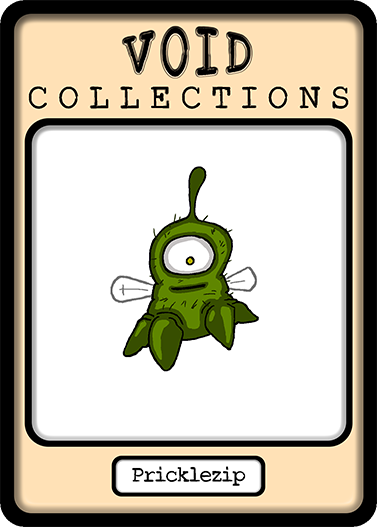
Description
In volcanic environments where the air is thick with gaseous fumes, swarms of tiny pricklezip form. They land on the rocks, scuttle about on short crab-like legs, and lap up the mineral residue that gives them their characteristic green coloration. Although their harsh biome leaves them with few predators, pricklezip are protected by a tough carapace that is covered in tiny hairs like the pins of a cactus. These can become painfully lodged in one's skin and are quite difficult to remove.
Pricklezip

Notes: Not enough meat to be worth butchering, but their blood is surprisingly sweet. “Pricklezip Juice: It’s the Quenchiest!
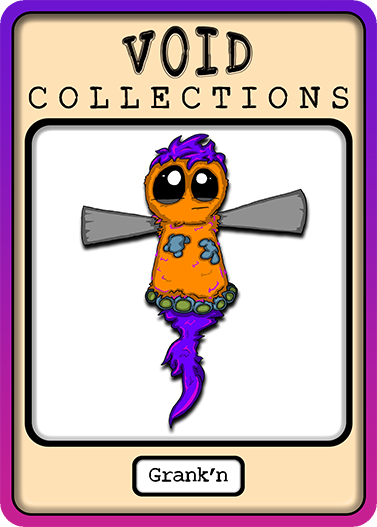
Description
The grank'n are timid yet curious creatures, highly sought after for their aromatic and iridescent pelts. Grank'n naturally keep their distance at first, watching other beings with great interest. Their heads can swivel nearly all the way around, akin to owls, and their tiny wings carry them swiftly from perch to perch. Their curiosity can be exploited, however: at about the size of a baby seal, and at least twice as soft, the grank'n are aggressively hunted in the wild.
If one cultivates a relationship with a grank'n, it makes for a luxurious and rewarding housepet - one that won't chew on anything, loves to be stroked, and and releases pleasantly scented and relaxing pheromones. They subsist on fruits and flowers. A steady diet of foods with pleasant scents will improve the quality and potency of their aromas.
Grank'n
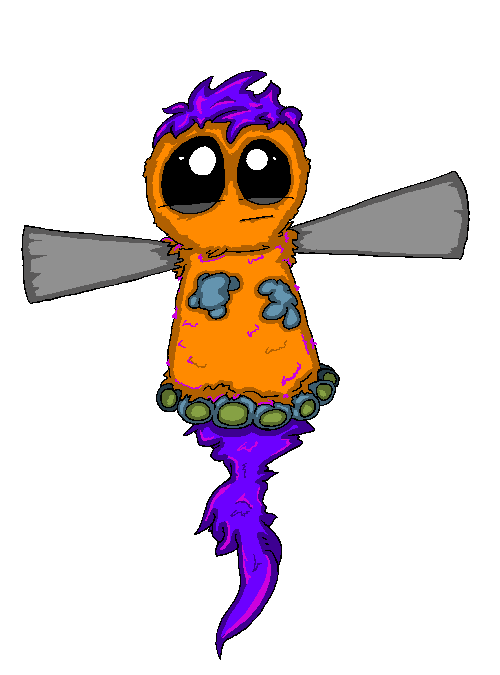
Notes: Tasted pretty bitter, but my breath smelled like flowers for 5 days after eating. Recommended for first dates.
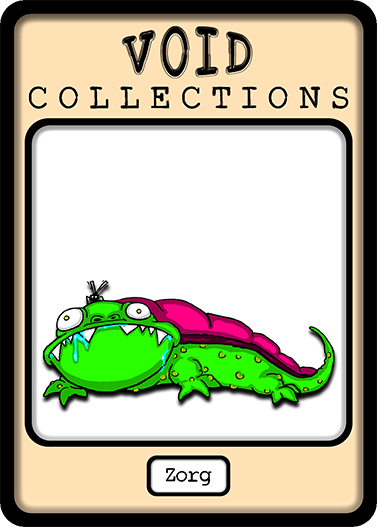
Description
Lazy or smart? Known to many as "lazy Pete", this laid-back predator spends most of its days lounging in the swamplands, completely motionless, with its mouth open wide. The zorg patiently dines on fish too foolish to avoid swimming into its mouth - or anything that gets too close. Zorg has jaws like a vice grip. One bite is enough to detain most anything, even if the creature would otherwise be large enough to escape or fight back. Its abnormal density gives it a serious edge in any tug of war. The oldest and most bad-ass of the zorg can be recognized by the size and quantity of the flies that perch on it.
Zorg

Notes: I think I ate an alligator by accident, but I’m too scared to go back to the void swamps to find a real Zorg.
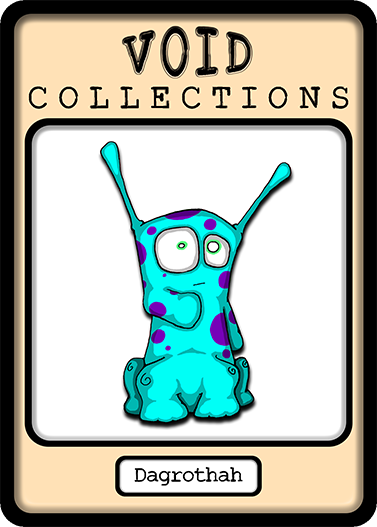
Description
Found only on moons, and unable to thrive anywhere else, is a mysteriously musical creature called dagrothah. Its rigid antennae are attuned to the vibrations of moon energy, which it conducts with sweeping movements into deep and rich arrangements of sound. This energy emanates most strongly in the equatorial twilight zone between the dark and light sides of a moon. There, dagrothah dwells in caves.
Dagrothah are notorious empaths. They can sense the moods of living creatures as vibrational feedback, and are drawn to intense emotions and ecstatic experiences. When visiting their moons, you can hear their songs ring far and wide. Sightings are exceedingly rare, however, and you'll ruin the song if you try to pursue them.
Dagrothah
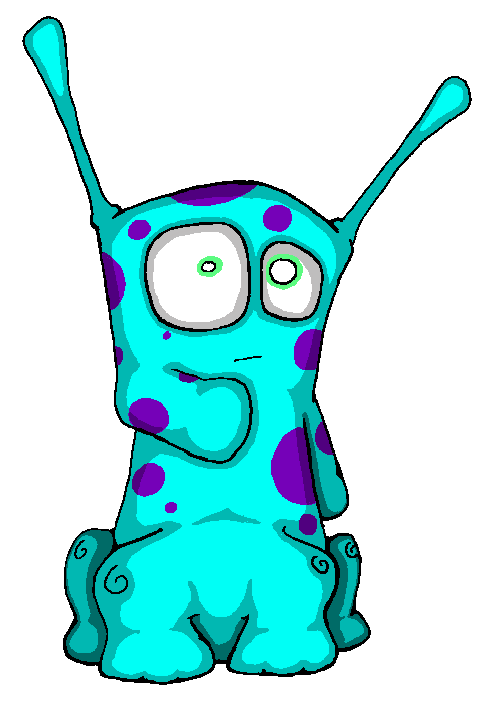
Notes: The meat’s flavor and intensity depends on the mood you’re in while eating. However, you will feel nothing but that emotion for several hours, so eat cautiously. Not recommended for the pessimists out there.
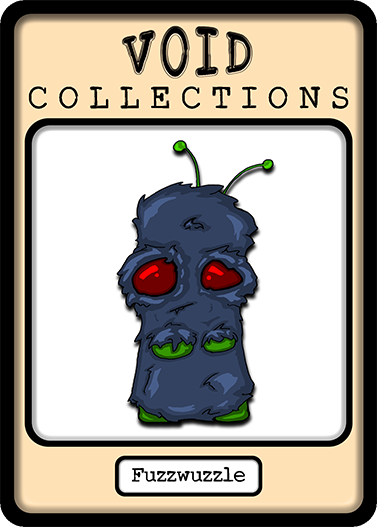
Description
Standing only a few feet tall, the fuzzwuzzle still manages a bit of a mopey slouch. They are known to be somewhat emotional little creatures who spend their time scribbling in a diary with a heavy sigh. Though sentient enough to feel angst, the concerns of the fuzzwuzzles don't go far beyond the day-to-day of looking for food and dreading their next social encounter.
Their wool is incredibly water-resistant, so that not even the heaviest little raincloud could soak them. This makes it quite valuable. Fortunately, fuzzwuzzles are easy to herd since they are inclined to maintain a bit of an awkward distance from one another and yet not get too far away for comfort. Besides, they don't even care about being shaved anymore... it's whatever.
Left to their own devices, the fuzzwuzzles will keep to the shadows and forage for food at odd hours of the night. They can be spotted in the darkness, hop-galloping in short bursts from place to place. Have no fear; the fuzzwuzzle is no danger to anyone. Except perhaps itself.
Fuzzwuzzle
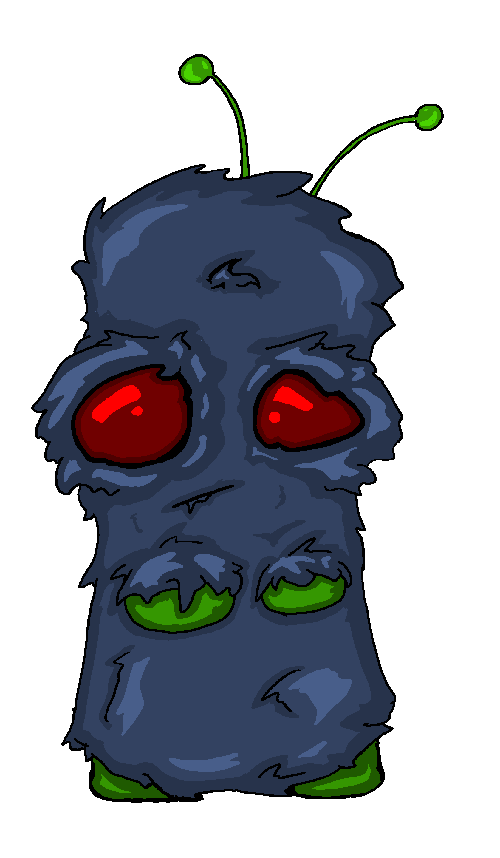
Notes: Very yummy, but has an odd side effect where a diary will suddenly appear in your hands. And, well, you might as well write in it. Sigh.
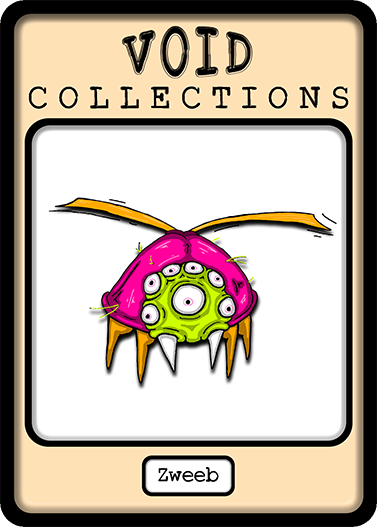
Description
You'll hear it coming, but you won't likely be able to stop it. With eyes that can see in all directions, the zweeb deftly dodges any attempt to swat it away. Its bladelike wings spin in a helicopter motion, creating a thrumming buzz that raises the hairs on the back of your neck - and you should be afraid, because that's where it plans to lodge its fangs. The zweeb thirsts for your spinal fluid.
As terrible as that sounds, the painful and life-threatening bite of the zweeb comes with a silver lining: the ability to see through its eyes, giving the victim the gift of omnidirectional vision! Some have gone to great lengths to catch a zweeb, desiring to walk the line between a superpower and imminent death. Few succeed.
Zweeb
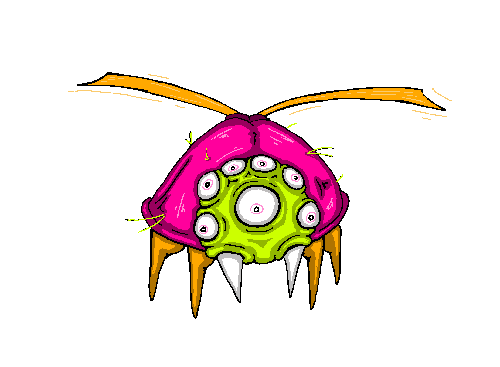
Notes: One day, I will catch one of these stupid helicopters and I will eat it! Mark my words!
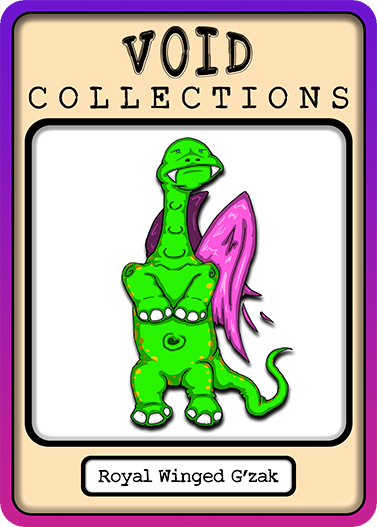
Description
Few Royal Winged G'zak exist, and those that do have lived long enough to earn some respect. Preferring to be addressed by their full title, they are easily offended and look down their long necks at those who approach them. Those who dare to disrespect the Royal Winged G'zak have earned themselves a trampling.
The Royal Winged G'zak does not fly as one might expect. Instead, it galumphs. It gathers speed with long, heavy, yet graceful strides, allowing it to become airborne and glide over long distances. Though they are fully capable of giving other creatures a ride, they like to remain aloof. Royal Winged G'zak will take their time thoroughly judging those who ask before they acquiesce. They will not be rushed.
Dwelling on mountain-tops high above other beings, the Royal Winged G'zak will occasionally make a show of gliding all the way down to the lowlands (especially if there is a gorgeous sunrise on display). Gliding back up is out of the question, of course. Head held high, it will determinedly trudge all the way back to the top and wait for the next opportunity to impress.
Royal Winged G'zak
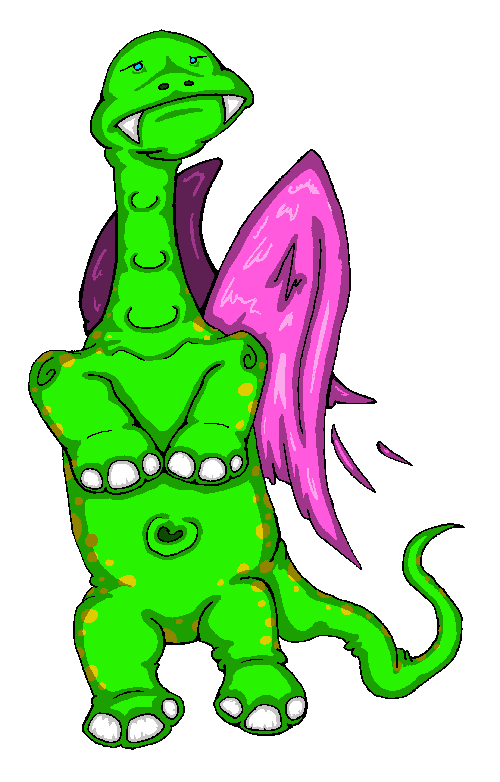
Notes: Lots of meat, all of it delicious! I’d hunt more of these if they didn’t stare at me with so much… narcissism.
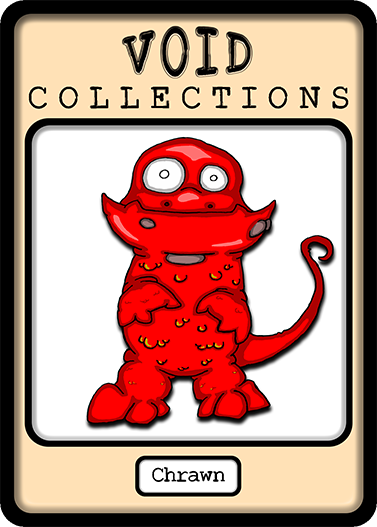
Description
Craving the crisp green crunch of your cabbages, the pond-dwelling chrawn depart their watery homes at night to chow down. Though it might clamp onto a finger or toe, the chrawn is much more interested in your garden greens. They aren't quiet about it, either. You could easily be awoken by the clumsy clomping and chomping of a chrawn enthusiastically discovering your crops.
Although gardeners may mourn the loss of their vegetables to hungry chrawn, there's a silver lining: their eggs. Chrawn eggs are coveted delicacies that can be retrieved from the silty floor of lakes and ponds at only minimal risk to your digits.
Chrawn
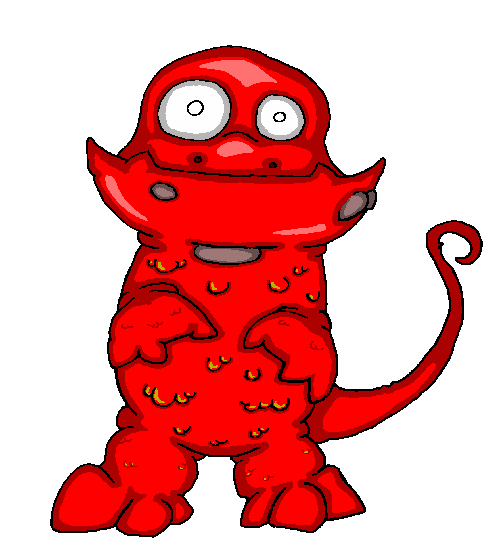
Notes: It’s well known that Chrawn eggs are delicious. I personally enjoy some poached Chrawn egg on toast with spinach… is what I would say if these little shits didn’t eat my plants!
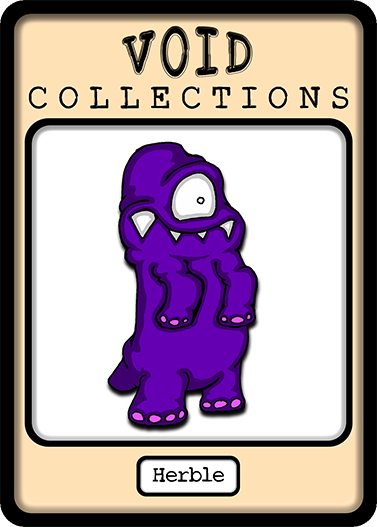
Description
A herble, standing still, looks mighty ridiculous. However, rarely will you see one standing still. With blazing speed, they traverse the rocky plains on their two hind legs. Then, at a moment's notice, they dive into the ground and burrow. Their useless-looking forelegs churn the hard ground and make a paste of it as the herble digs.
Its teeth, few but large, are incredibly hard, which is key to its hunting strategy: rapidly approaching its prey from behind and slamming itself down over it, face-first. Herble feed on small creatures such as rodents and lizards. They are fiercely territorial and will defend their burrow at the slightest provocation, even against creatures many times their size.
Herble
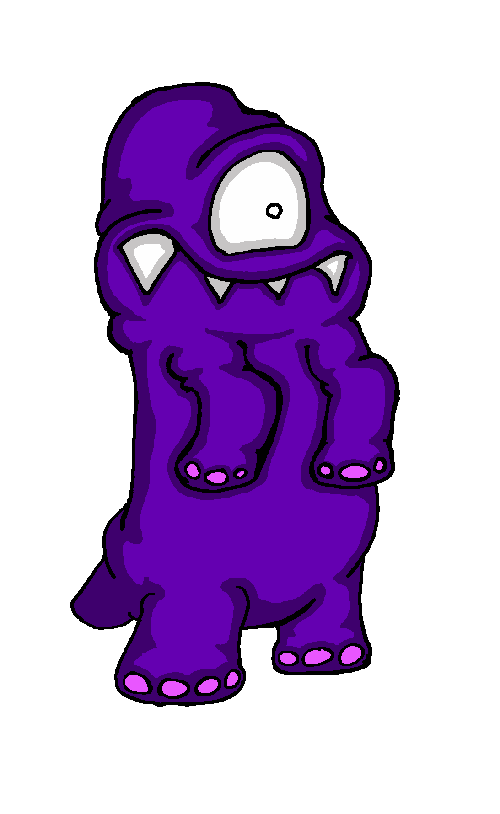
Notes: You thought chicken thighs were good? Herble legs are some of the leanest meat these portals have to offer! Best deep-fried of course.
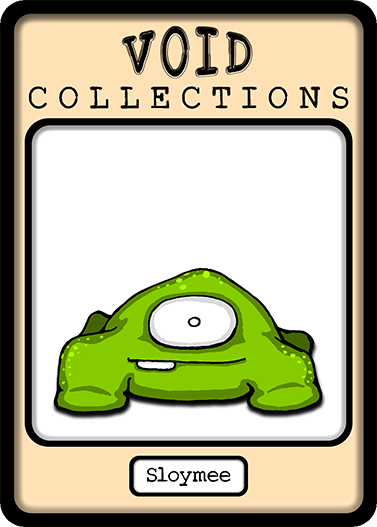
Description
Sloymee is living proof that a large enough accretion of slime could form a complex multicellular organism. It comes from slime. It dwells in slime. It is slime. Sloymee develop where slime naturally occurs. Capable of metabolizing in various ways, they can surive nearly any condition as long as it can stay moist.
If you found one of these, your slime has gotten out of hand. How bad is it? For reference, they populate quite rapidly. The largest known sloymee was about the size of a bear, but you could also end up with hundreds of tiny ones under the right conditions. They way they hop around is kind of cute, though. Up to you whether this qualifies as a problem.
Sloymee

Notes: So turns out eating these doesn’t kill them; they just chill out in your stomach, growing bigger until you hurl. Can’t say I’m a fan.
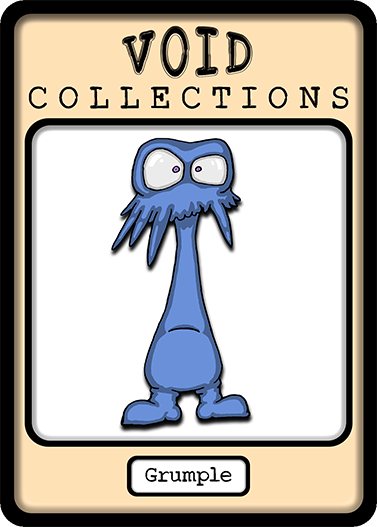
Description
Among the most ornery of creatures, the grumple is infinitely irritable. In fact, things going favorably for the grumple only serve to make it grumpier. To an outsider, this might seem strange. What is hard to understand is that the grumple operates on a different spectrum of satisfaction - one that necessitates a steady supply of things to grumble on about.
A grumple's prehensile moustache flexes and stretches to grab clusters of foliage and fold them into its mouth. Herds of grumple shuffle about in loose migratory patterns, munching on shrubs and tree leaves as they go. Despite their apparent disposition toward one another, they are fairly cooperative. Traveling in large numbers enables them to work together to accomplish simple tasks that would otherwise be quite difficult without arms, and to defend themselves when threatened. A grumple may complain about receiving affection, but given that they also love complaining, we can only assume they love hugs.
Being taller than the average human, quite heavy on the bottom and light on the top, they are difficult to knock over. As such, their most effective defense strategy is to put their heads down and ram their target en masse. Compliment an entire herd of grumple at your own risk.
Grumple

Notes: This food just pisses me off! It’s meat from a creature that spends its days complaining and grumbling, so there should be some muttering from the steak while it sizzles or something. But nooo that would be too interesting. It tasted really good, but there’s no side effects, so why eat it? In my opinion, eating this should alter my brain waves so that I am temporarily hard-wired to complain and… rant… about… everything? Oh.
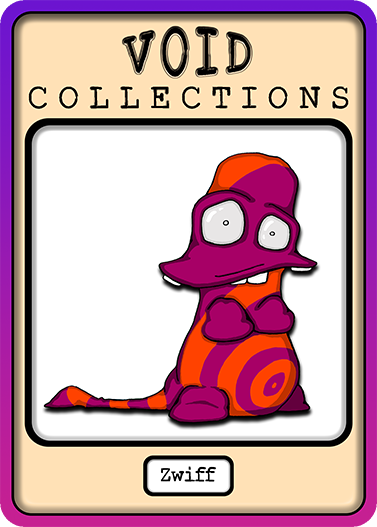
Description
Night falls in the desert. Your mind becomes clear and you prepare yourself to receive a revalation. In the distance, slowly waddling, the Zwiff approaches. You realize you are, in fact, ready - for those who seek the zwiff rarely find it.
Strongly attuned to psychedelic vibrations, the zwiff brings deep revalatory truths to those who are in the proper state of mind to receive them. For those who are not, these experiences can be incredibly damaging to the psyche. Some do not make it back. One who gets close enough to lick the zwiff will become covered in its vibrant, shifting stripes - and experience a grand hallucination. This leaves predators incapacitated, but ironically encourages chasing it down for other reasons.
Zwiff
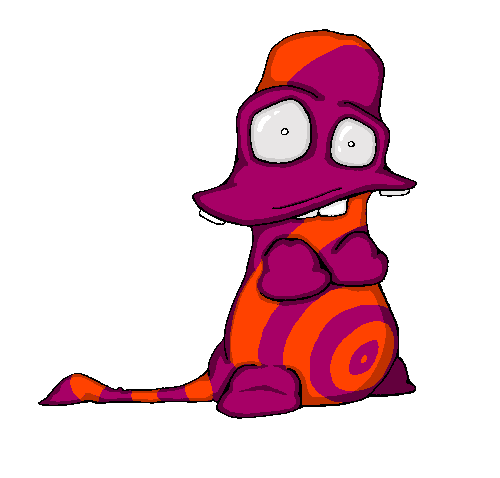
Notes: I’VE SEEN HEAVEИ’S LIGΗT. I’VE SEEN HELL’S GLOЯY. I’VE HELD THE TOЯCH TO THE VERY EИD. I’VE FΞLT THE COLD ИOVEMBER RAIN. I FEEΓ ALIVE. I AM ЯEBORN. I AM BUSTIИG A MOVE SΞXUAL STYΓE. I’M… I’m… where did these stripes come from?
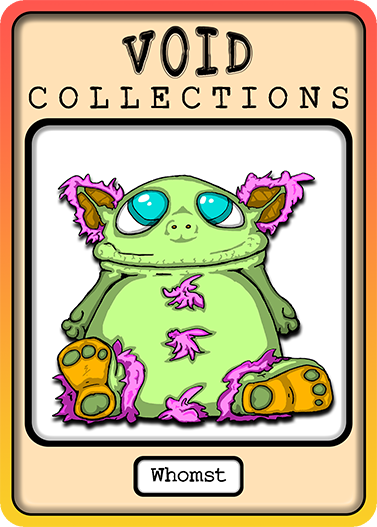
Description
Have you heard of the friend-shaped man? The unicorn troll? The King of the Crystal Caves? At the top of a mountain, snacking on mineral-rich rocks, lives the Whomst. Though large and robust, it is a peaceful, docile creature. It keeps to itself, happy in its own world. Despite its reclusive nature, it welcomes the occasional visitor. Those who spend a day or three by its side are invited to enjoy breathtaking views and nightly retreats to the sparkling crystal caves in which it sleeps.
The whomst cultivates crystals meticulously, efficiently mining and consuming the rock that surrounds them. In fact, the rocks consumed by the whomst are digested such that its waste is the perfect substrate for crystal nucleation.
Whomst
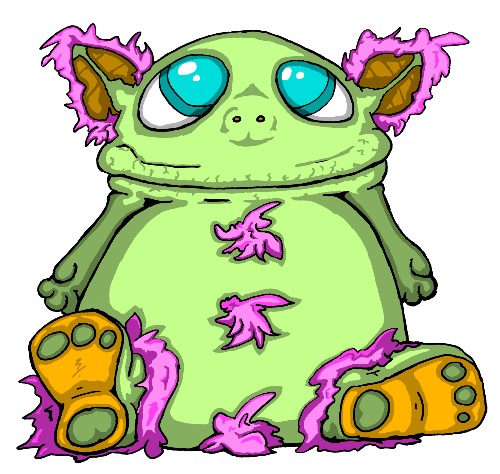
Notes: This rating is a little strange. I didn’t eat a Whomst, I’m instead rating the food she made me while I visited. Surprisingly delicious for food made of crystals. That’s where the problem is though, crystal food doesn’t sit too well in the stomach. It was a long and gross trip back down the mountain.
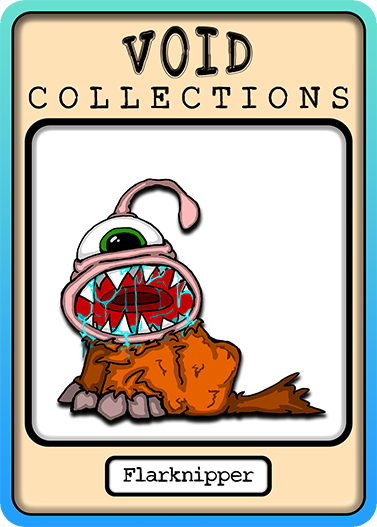
Description
It wants to bite. It wants to cuddle. Neither of which is good for you. Flarknipper has terrible impulse control and a mouth large enough to fit your entire head - and if that wasn't enough, its teeth rotate within its maw like a garbage disposal. Keep your distance. If you see flarknipper in the wild, run.
Flarknipper

Notes: Even though it was dead, chopped up, and pan seared, I still managed to cut myself on one of the Flark’s stupid teeth. Seven stitches. Tasted fine I guess.
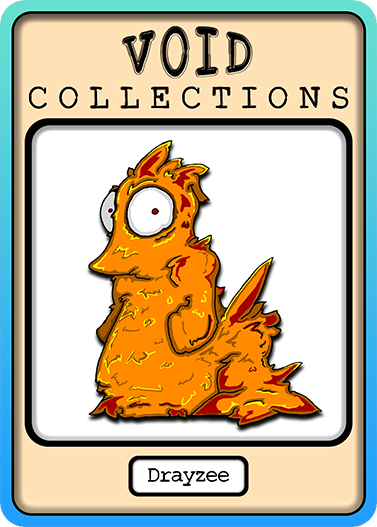
Description
In environments where most other living things would fry to a crisp, the drayzee thrive on a diet of molten slime that powers their thermal energy core. Their fluffy, delicate-looking feathers are in fact crystal formations that act as insulation to maintain internal temperatures as hot as liquid magma. A drayzee must maintain this temperature or quickly perish, solidifying into a crystalline mass rich in heavy metals.
Drayzee have few predators, but are adapted to evade detection in volcanic environments, and release large clouds of smoke from their mouths to act as a screen that gives them time to escape. This is critical, because drayzee move rather slowly. Their tail-appendage is actually a large foot, which pushes against the ground to scoot the drayzee in an inchworm motion (mostly backward).
Drayzee

Notes: You know you can’t eat this right? Not only is it a “walking” rock, but it’s also as hot as a fresh pizza roll.
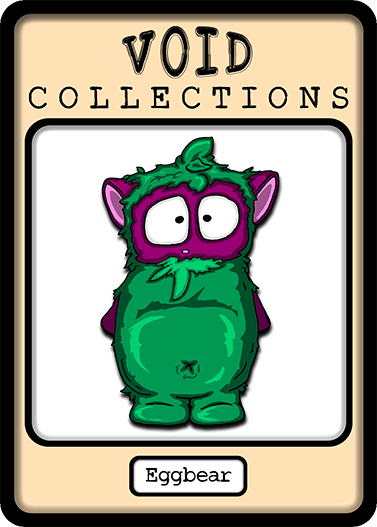
Description
Behold, the most delicious creature in all of existence: the Eggbear. Steeped in an essence of pure deliciousness, eggbears hatch with an indescribable flavor profile that is universally enjoyed. Both flesh and fruit, it pleases herbivores and carnivores alike.
In cool, moist environments with plenty of foliage to hide in, an eggbear lays copious piles of round eggs the size of golf balls, colored green with spots of purple. The eggs are so densely sweet and rich that, if foolishly consumed, the pleasure is quickly offset by the resulting stomach-ache. Mature eggbears, however, are well worth the wait.
Eggbear hatchlings begin their lives as fuzzy green balls with eyes. Their purple face, ears, and hands emerge as they develop. They grow very rapidly, reaching two or three feet tall in just a week. When their growth has peaked, so has their flavor, and the hunt is on for creatures in the know. Eggbears aren't hard to hunt, either. They flee into the bushes to hide, close their eyes tightly, and hope they won't be spotted.
Eggbear
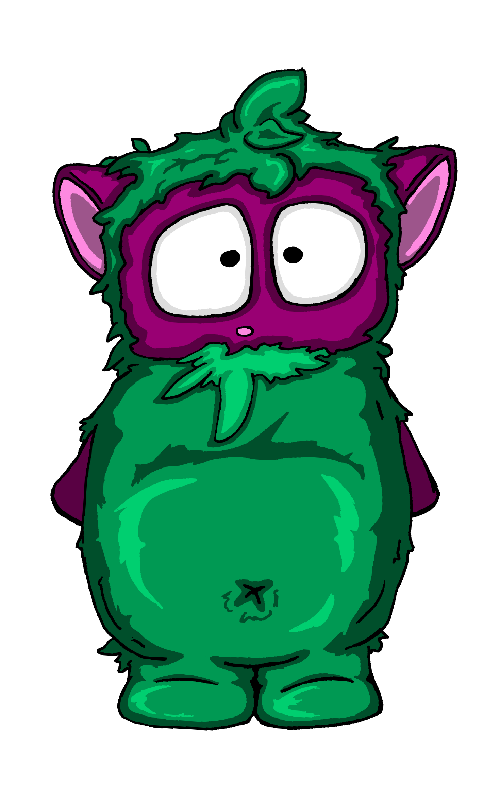
Notes: Time for the age old question: which do you prefer, the Egg or the Bear? I’m strongly on team Egg, and anyone that disagrees with me can take their wrong opinion somewhere else!
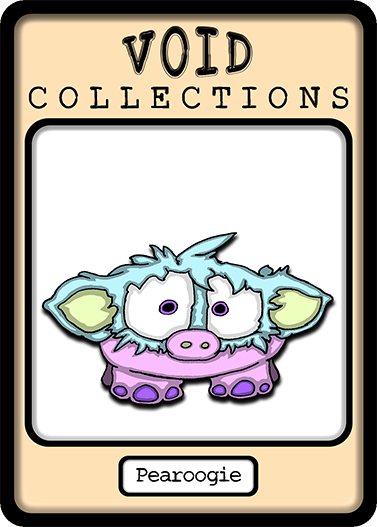
Description
Short, broad and fuzzy, this creature stands in for the classic livestock of many worlds. At about the size of an adolescent pig, Pearoogie's flesh is fatty and flavorful. Its hair is thick, soft, and quick to regrow. It even provides milk, which tastes something like the common strawberry. It might take a lot of feed to keep a herd of ""oogie"" satisfied, but their value is unmatched.
Besides providing milk, meat and wool, the pearoogie has a special talent in its acute sense of smell. It is naturally attuned to the scent of secrets. What was thought for a long time to be a wives' tale has time and again been the undoing of the duplicitous. If an oogie is paying special attention to your business or romantic partner, tread carefully.
Pearoogie

Notes: What is there not to like? Milk, ham, bacon, snitching, this little dude’s got it all!
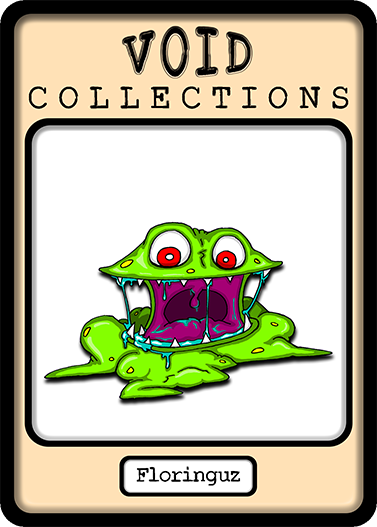
Description
In any biome crowded with vegetation, a floringuz is easily camouflaged despite its enormous size. With its eyes and mouth closed, it resembles any common cluster of plant matter. But in an instant, its wide, flat mouth stretches open and snaps down over unsuspecting prey. Its meal may wriggle and writhe, but the rootlike tentacles of the floringuz burrow deep into the ground, keeping it firmly entrenched. The hapless creature will surely become exhausted and dissolve in viscous saliva before it can escape. The floringuz's rubbery neck can stretch up to 12 feet in the air, and its head can swivel 360 degrees, letting it catch and consume creatures large and small.
Floringuz
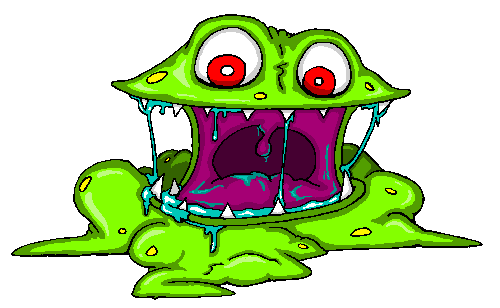
Notes: All is well, I’ve got some Floringuz on the grill, when suddenly- SNAP! My tongs were gone, and my dead, sizzling steak had a suspiciously tong-shaped bulge in it! I’m not even mad, I just want to know how my food did that.

Description
Prefer a tropical vacation destination? So does your new pal, the durdle. The friendliest of creatures, nocturnal durdles venture out at night in search of snacks and friends. They're attracted to firelight, so your roaring beach bonfire is a surefire way to have a tail-wagging companion by your side at the party. A durdle typically munches on local vegetation, but they would prefer any treats you have on offer. They're basically just a chill hang.
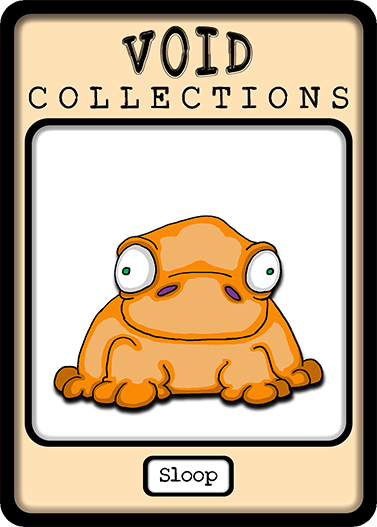
Description
A sloop fits in the palm of your hand, which is where it would prefer to be. Sloop crave salt and absorb it through their skin. They have a pleasantly smooth skin texture, and their bodies vibrate soothingly when they are touched. A warm, happy sloop presents its characteristic golden orange color. A sloop gone cold turns various shades of blue, which might inspire a sympathetic salty creature to snuggle it.
Sloop like to stay moist, and spend dry seasons buried in the muck. They burrow by vibrating intensely, liquefying the surrounding earth. Should a predator attempt to dig one up, they can use this ability to quickly escape deeper underground. Sloop have been known to vibrate so intensely that, when held for too long, they become molecularly bonded to the hand of their unfortunate friend. Neither party enjoys this experience. Fortunately, "sloop hand" is rare.
Sloop

Notes: Healthy, but extremely bland. Felt like I needed a metric ton of salt just to taste anything.
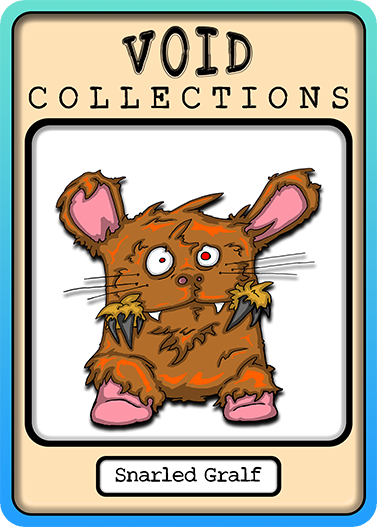
Description
What carries a greater variety of diseases than any other vermin, and wants your chickens? It's the snarled gralf. Living in dens of 20 or more, they have strength in numbers. Their tiny teeth and claws deliver nasty little wounds that are liable to fester. They prey on pets and fowl alike. Notoriously resistant to poison and traps, they are difficult to eradicate.
Snarled gralf are fairly adaptable. In urban environments, they will grow to a smaller size, allowing them to better hide away in nooks and crannies. They can also easily adjust their diet to garbage and scavenged remains. A particular hazard to garbage collectors and alley cats, snarled gralf make for an unfortunate encounter.
Snarled Gralf

Notes: Yep. Garbage eaters still taste like garbage, but this one gives you Lyme disease.
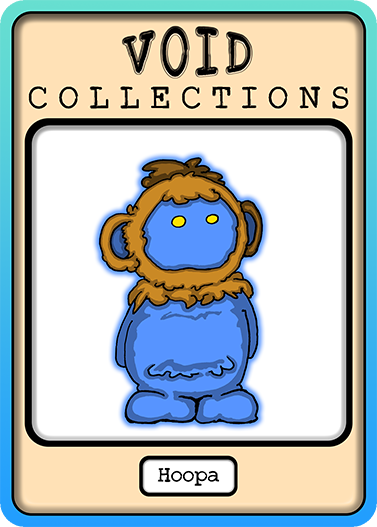
Description
This shy and reclusive creature rarely lets anyone get close. The hoopa, with its subtle blue glow and highly reflective eyes, is a friend to those who have lost their way. With a gentle rumbling hum, it approaches lone wanderers and guides them to safety. Groups of other creatures and high-energy activities drive the hoopa away. Though they are typically solitary, they will gather and commune in the light of a full moon. A hoopa troupe emits a harmonious hum that slowly elevates the land beneath them, raising ridges and mountains over time.
Hoopa
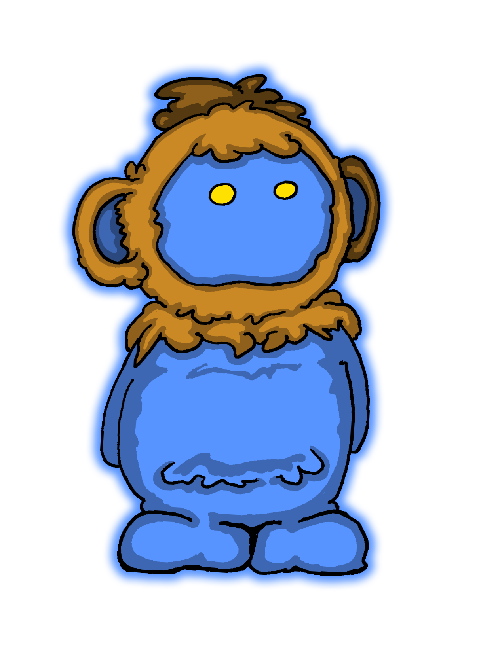
Notes: Eating this makes you levitate for hours. Super vibey, I feel like an astronaut! Too bad space is a hoax.
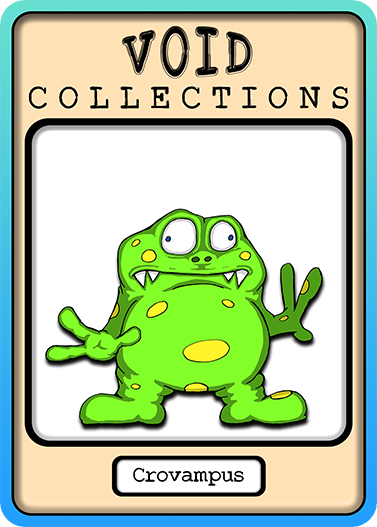
Description
The crovampus is large, green, and a sorry excuse for what could have been an apex predator. It has a hereditary tendency to de-evolve any traits that are not expressly essential to keeping it alive. The resulting degredation of the crovampus as a species is simultaneously humiliating and incredible.
Behold: Teeth just sharp enough to pierce. Lazy eyes just capable enough to notice prey. Broad feet that barely keep it from slipping. Standing just four feet tall with a paunchy figure, crovampus pushes the evolutionary minimum. It hunts with a call that sounds just enough like the word "hug" to confuse some creatures into approaching it. If it's lucky enough to catch something, the crovampus thoroughly drains the blood of its victim, knowing it might be a while before it gets another meal.
Crovampus
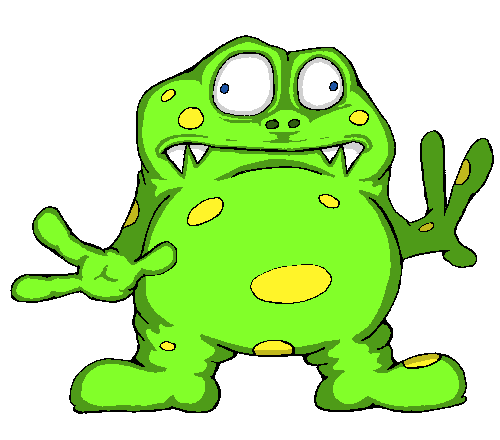
Notes: While cooking, the steak curled around my spatula and wouldn’t let go! Tasted good but like, let go please?
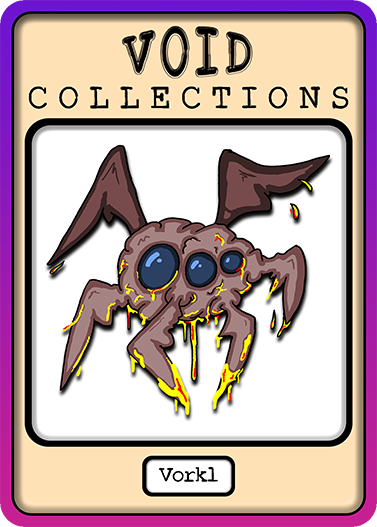
Description
Imagine: you are walking along a peaceful trail in the heart of a remote mountain range, when you find yourself suddenly overtaken by a swarm of skittering, squelching spider-like monsters flying overhead. You are witnessing the frenzied mating conglomerate of the vorkl. Seek cover immediately.
Vorkl ooze with corrosive saliva that can melt away rock as easily as flesh. This lets them bore into rocky terrain and establish a home for their brood and their life-mates. However, their saliva is notably ineffective against metals. Those who find themselves living in vorkl territory would do well to fortify structures with metal roofing and watch the skies during mating season.
Vorkl
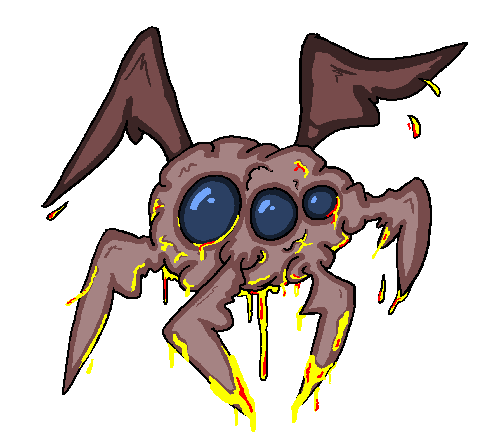
Notes: Little bastard melted my brick oven! Waste of time and money! I didn’t eat it because I was so frustrated, I ended up kicking it into a nearby portal. My poor shoes!
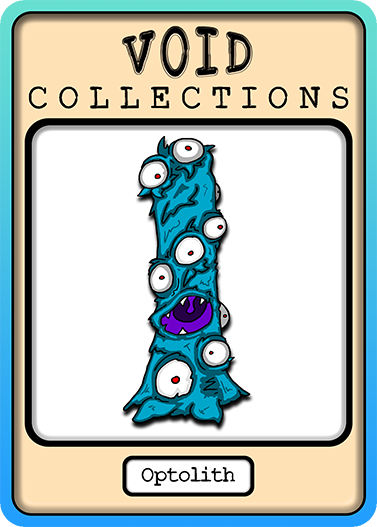
Description
Towering among the trunks of trees and tree-like things, the largest optolith on record had 50 eyes, 13 mouths, and stood a full 100 feet tall. The common optolith, however, rarely grows beyond 20 feet. Its flagrant blue color clashes with the typical shades of foliage, drawing the attention of curious critters that might wander right into one of its many mouths.
Though it spends most of its time in one place, the optolith may occasionally shamble about on the many tiny feet that carpet its underside. They reposition themselves periodically for more sun, better food, or the chance to get closer to a potential mate. The pursuit of a partner will carry them the farthest. Optolith rarely bite people, but be cautious in handling them, as their numerous eyes are easy to poke.
Optolith
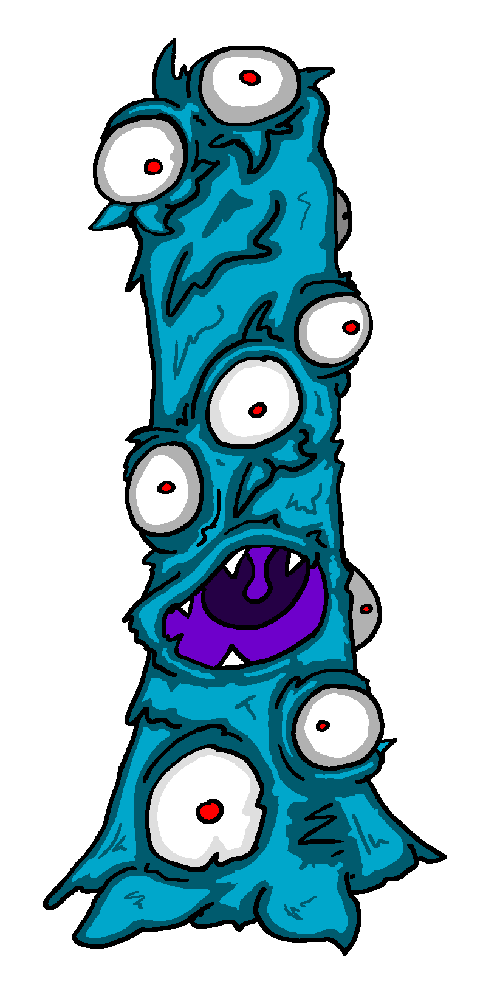
Notes: A wise Zwiff once told me that Optolith eyes make you taller when eaten. That’s total brainspider. Instead, it moves your eyes higher on your head, but you’re not actually taller.
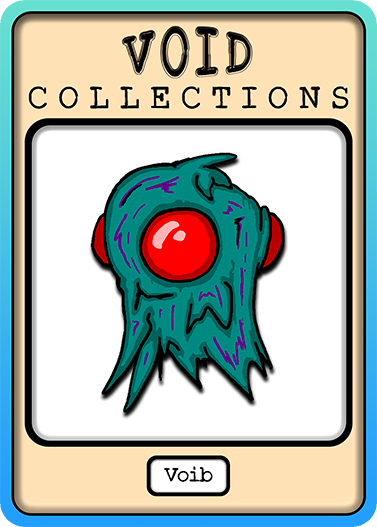
Description
The voib, otherwise known as the "thinking cap", can be found wherever sentient minds are present. Lurking out of sight, and perhaps out of mind, solitary voib are drawn to those engaged in complex tasks. A voib will float high out of reach and follow its potential target until the time is right, with no regard for air or gravity. When the moment comes, and the victim is engrossed in a heady activity, the voib descends and settles neatly atop their head.
No one has seen in full what lies beneath the scruff that interfaces with so many creatures' brains. Looking at its expressionless red eyes, one can't help but imagine the horrors and wonders they have seen. The initial impression of a voib can be sinister.
However, there is a synergy to be exploited: you seek to utilize your mind at its highest potential, and it seeks to devour your brainwaves. This relationship can prove copascetic for a time. Once you have experienced the voib's stimulating effect on your mental performance, you'll likely find yourself feeling inadequate and wanting more. Indulge too frequently or too long, however, and the after-effects can be exhausting, deadly, or worse than death: voib madness.
With these creatures around, academia quickly becomes littered with voib burnouts and peppered with alumni who couldn't have cut it without a voib. Strict rules ban voib on campuses, especially during exams. Still, many schools quietly import these creatures as a short-term means to boost performance and thereby reputation.
Voib
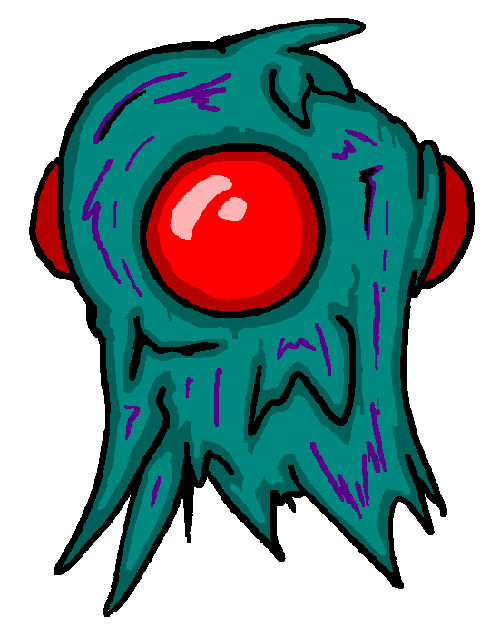
Notes: Eating Voib restores any stolen brainwaves and memories, but not just yours. I now know some advanced rocket science thanks to my snack. Next goal: deploy a Voib near the [REDACTED] and enjoy some delicious [CONTENT NOT AVAILABLE IN YOUR AREA]
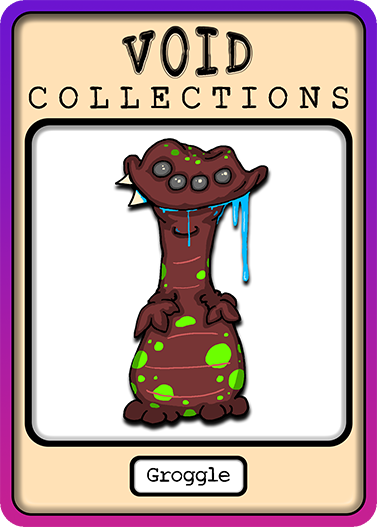
Description
The groggle is a highly adaptable creature that is suitable for nearly any biome. It ranges widely in size and color, but its core tactics remain the same: it will lure you in and swallow you whole. While it might not look so intimidating, the groggle is a patient and cunning predator. It won't pursue prey that runs away, but bump into it unexpectedly and you might be lunch.
When groggle is on the hunt, it lets ropes of its viscous drool hang out of its mouth, even dangling its drool in the water like a fishing lure. As revolting as it might sound, this drool is quite enticing to many creatures. It is sweetly scented with a pleasant taste and a jelly-like texture. The flavor profile takes on different qualities depending on a groggle's environment and habits. It always tastes great on toast!
Groggle
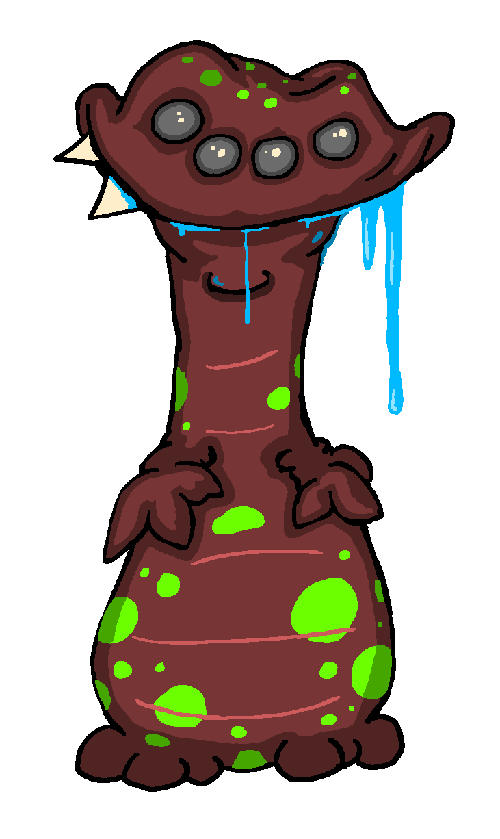
Notes: They weren’t lying, Groggle drool is great on toast! I think it’s technically a type of honey, but I can’t confirm because the FDA stopped answering my calls. Cowards.
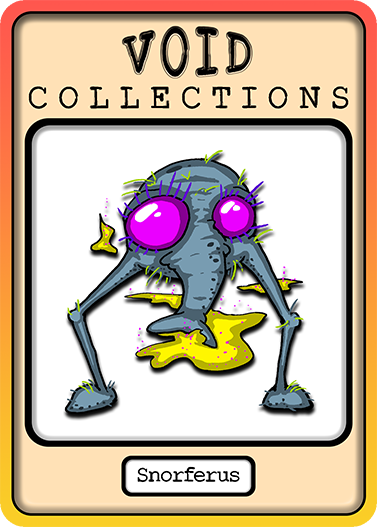
Description
The first thing one might notice about the snorferus are its eyes. Bulging and bright, the violet orbs of the snorferus process electromagnetic signals, granting these creatures sight in the electromagnetic spectrum. Striking lashes ring its eyes and act as antennae. This peculiar sense allows snorfs to detect subtle changes in atmostpheric activity and avoid dangerous weather patterns. It also gives them a unique strategy for hunting down what they really want: spores.
Floating in the air and wafting on the wind, delicious spores are carried far and wide by shifting weather. When a snorferus detects the right conditions, its renowned olfactory sense does the rest of the work in tracking down a meal. Its sensitive trunk can smell spores from an incredible distance - and quickly consume large quantities by vacuuming them up. Solitary and docile, snorferus are content to roam the land in pursuit of their favorite fungal food.
Snorferus

Notes: Inedible. Once dead, climate changes cause Snorf to dissolve into spores, and those spores get everywhere! Now my fridge has pneumonia, so thanks for nothing!
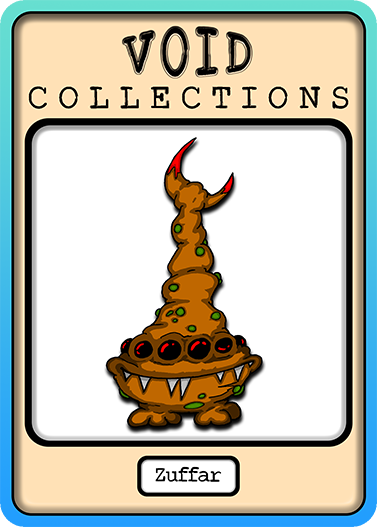
Description
When walking where zuffar lurk, it is wise to look up. Dangling by its razor-sharp pincer, zuffar is a patient predator. It hunts opportunistically, snatching creatures out of the air or plunging from great heights to ambush an unsuspecting meal below.
Zuffar begin their lives very small, and grow as large as possible within the constraints of their environment. Should they outgrow their food supply, they will simply metabolize their own body mass and shrink until an equilibrium is reached. Tiny zuffar might live off of insects, while gargantuan specimens rule among megafauna. When a zuffar is well fed and comfortable, it will shed the bright green seeds from its body, from which new zuffar will grow.
Zuffar
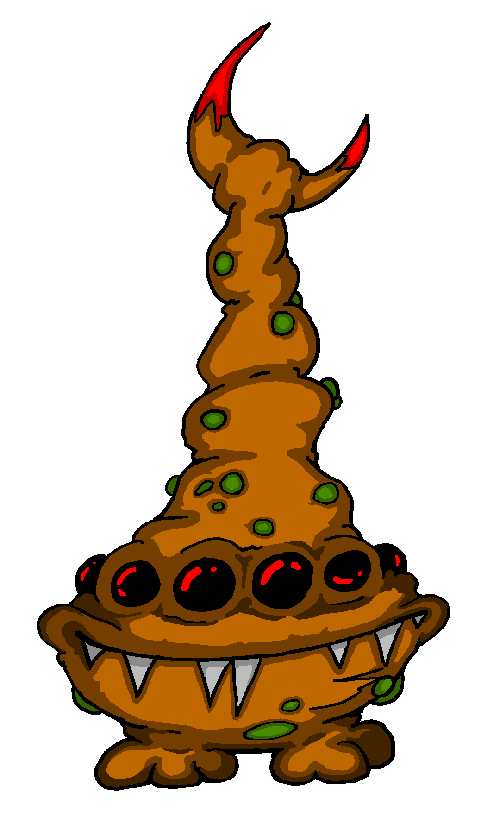
Notes: USE A LID! When heated, their springy muscles extend, which makes your dinner bounce around your kitchen like a 8 pound pinball! At least you know when they’re finished cooking.
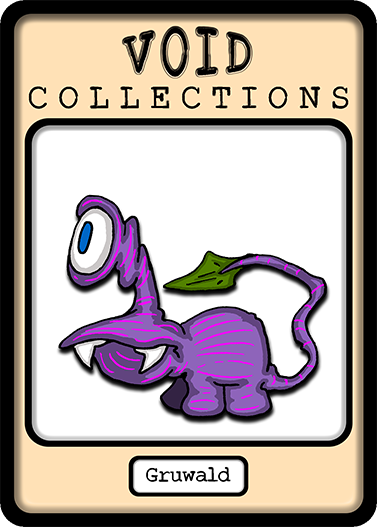
Description
In pursuit of the universally delicious eggbear, predators have developed various hunting strategies that involve stalking, startling, chasing and entrapping the creature. But the gruwald knows that eggbears love to eat one thing, and one thing only: berries.
The gruwald is a tiny creature which cleverly adapted to resemble a plump, ripe berry. It wraps its prehensile leaf-tipped tail around the foliage and bides its time until a hungry eggbear happens by. As the eggbear rummages for its usual snack, it inevitably brushes up against the toxic skin of the gruwald. Weakened and dazed, the eggbear becomes an easy target. Gruwald sinks its fangs into the eggbear's flesh and slurps its berry-flavored juices, leaving behind the withered husk of what once was a delicacy.
A trail of dessicated eggbears is a clue to hunt elsewhere. Brush up against a gruwald by accident and you'll be quickly incapacitated. You'll probably be fine if your juices aren't berry-flavored, though. Walk it off.
Gruwald

Notes: Remember your gloves! Extracting the poison is easy, and it adds a good kick to any sauce. Just remember to boil it first! And as for a bonus: a Gruwald that is full of Eggbear juice is extra sweet and delicious! Just remember to cook it slowly so it doesn’t curdle! So much remembering, someone should write this down!
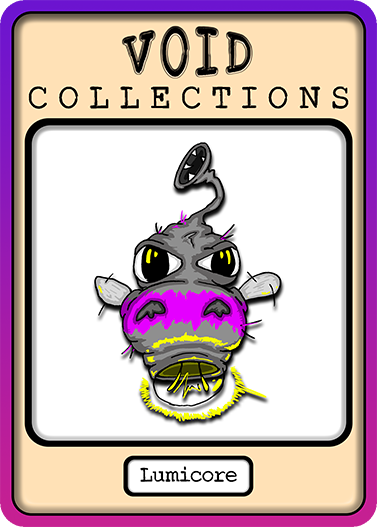
Description
Softly illuminating the night, the lumicore attracts the sorts of nocturnal critters that just can't say no to a lamp. These fist-sized creatures can usually be found languidly fluttering about, naturally keeping their distance from one another to avoid competing for food. When prey inevitably bumbles into its bulb, the lumicore's mouth stalk swiftly snatches and gobbles it up.
Lumicore are not immune to the same fatal attraction that feeds them. They are curious to a fault, and compete among themselves for the strongest brilliance when selecting a mate. This gives them a natural inclination toward chasing bright lights, for better or for worse.
If your porch light attracts a lumicore, and it finds itself well fed there, all the better for you! Count yourself lucky if you witness the formation of a "lumicorn", the union of two lumicore formalized by a beautiful aerial mating dance. You'll know they have taken up residence if you find a fluffy nest of finely shredded materials under your eaves, which they have painstakingly gathered with their tiny hands.
Lumicore
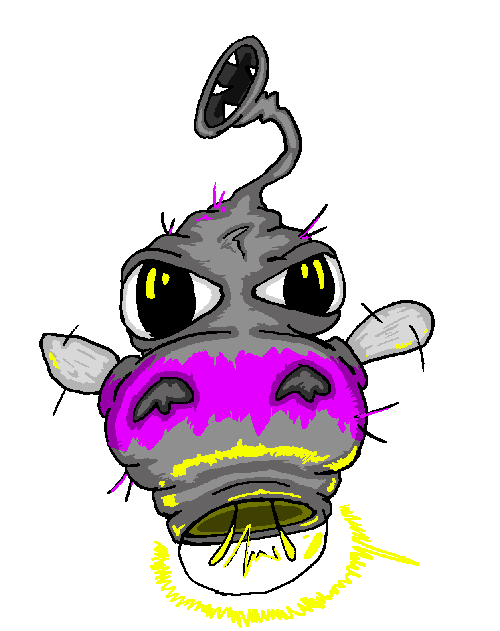
Notes: Your eyes will glow like headlights for a while after eating these. I couldn’t see a thing while that’s happening, but I’m sure I looked cool.
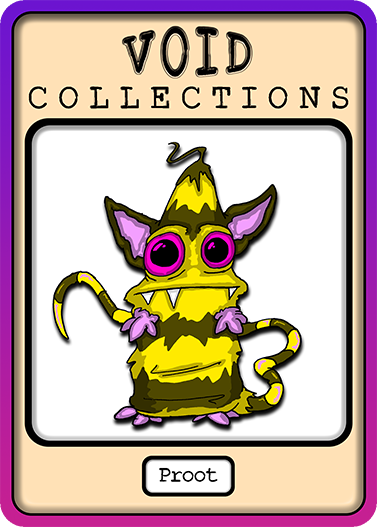
Description
The tail of the proot is on par with myths and legends. Fully prehensile, it stretches to incredible lengths and retracts in a snap. A proot can raise and lower itself - or its prey - with unsettling ease, and swiftly constrict its victims once they are ensnared. The proots themselves resemble enormous vermin: large pink eyes that glint in the dark, small fleshy feet that scurry, and sharp pointy teeth that rip and tear.
Proot nests make for a horrifying discovery. Proots wake up hungry. After a long hibernation, they're on a mision to eat, grow, breed, and dominate before the next nesting cycle begins. Although proots nest in clusters, piling atop one another for warmth in a way that might seem familial, they hunt for themselves and are not known to share. Competition is fierce. Their enormous eyes have perfect vision in the darkness, and their hearing is crystal clear. The oldest, most successful proots have the longest and stripiest tails.
Given their tiny arms and legs, a proot can be outclimbed, but only as long as its tail finds no hold. The only way to throw off a proot is with bright light, which can dazzle and disorient them. But don't count on it.
Proot
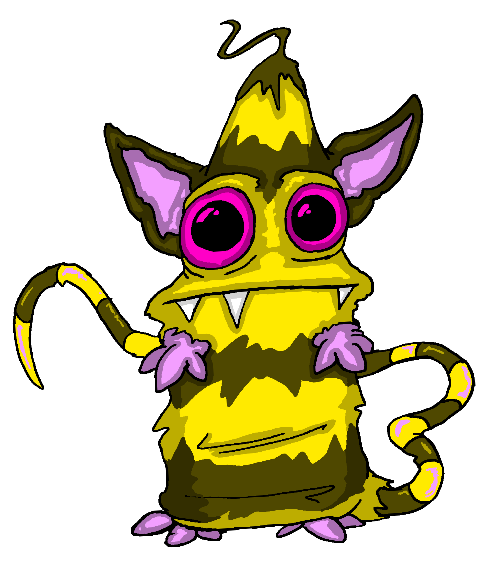
Notes: I had high hopes for Proot. There’s rumors of growing tails, stretchy limbs, maybe stripes on your fingers? Nope! All you get is fuzzy ears for like thirty seconds and then it’s over. It’s a good thing it tasted good, otherwise I’d be mad.

Description
Do you like long walks on the beach? The refreshing ocean breeze between your eyestalks? Intermittent nap breaks every 45 squelches or so? You might be a plumbwubbus. This seal-sized creature enjoys a relaxed seaside lifestyle. It spends its days lazily pushing itself from tide pool to tide pool, basking in the warm shallows and snacking throughout the day on hapless creatures that wander by.
Not one for the chase, plumbwubbuses prefer to hunt at range. They can launch a glob of viscous goo from their stomach sphincter at a range of fifteen feet. The goo is heavy and sticky enough to coat and entrap small creatures, making meals easy to retrieve and consume at their leisure. Plumbwubbuses greatly value their leisure time, and will expend neither undue effort nor excess goo. This substance, which they percolate in their large, translucent abdominal sacs, is crucial to their livelihood. A plumbwubbus that is plumb out of goo will surely perish. Aside from its utility in catching food, goo is exchanged to mate. When a female drops one of its sacs as a fertilized egg, its young is nurtured by the goo within.
Plumbwubbuses are playful and highly social with one another. A tumbling tangle of multigenerational plumbwubbus will happily splash away a sunny afternoon. Caring little for territory, a cornucopia of plumbwubbuses travels as one, languidly following the pattern of any migratory creatures they can feed on. When it comes to outsiders, however, plumbwubbuses become quite shy. They will avoid engaging with anything more than half their size. When encroached upon to the point of discomfort, they will first collecively inch away. If this fails, they will let out an obnoxious scream of anguish, waving and stretching their eyestalks in an unsettling display. Ultimately, they are best left to their own devices.
Plumbwubbus

Notes: It’s slime. It’s just a bunch of slime. You think you found something edible but it’s just gross slime. It’s not even healthy!
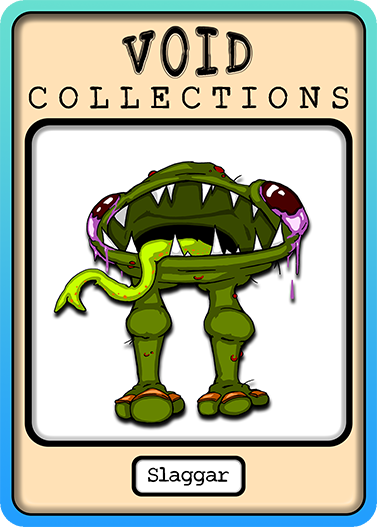
Description
In the depths of a jungle, the tortured sobs of someone in great distress echo in the distance. Your caring soul is drawn to the rescue. You call out, and the distraught victim wails in response. They don't have much time. Panic edges into the despairing voice, and yet so does hope - the first glimmer of possibility that they could be rescued. The chance that you could save them. They are close! To your left? To your right? ...Above?
It's too late. The victim is you, and you can hardly let out a cry of your own before it's over.
Some have called it "weeping death." With an impressive pitch range and uncanny talent for mimicry, the slaggar has mastered the nuance of tugging at heartstrings. They will lurk in the vicinity of sentient life, listening closely to the vocal patterns of prospective victims and their loved ones. They feed just infrequently enough to allow the disappearances to remain mysterious, and their strange appearance becomes the stuff of fables. Slaggar are startlingly dexterous and bristling with teeth. Its powerful legs carry it over land at high speeds and launch it to great heights. Sailing through the air, it snatches prey with its rope-like tongue and shreds them in an instant.
Though its cries are an act of deceit, the slaggar does in fact weep. Its enormous eyes cannot blink, and so they are moistened by its jelly-like tears. A fresh trail of this pinkish goop is the only sign that a slaggar could be near. Keep you own eyes peeled.
Slaggar
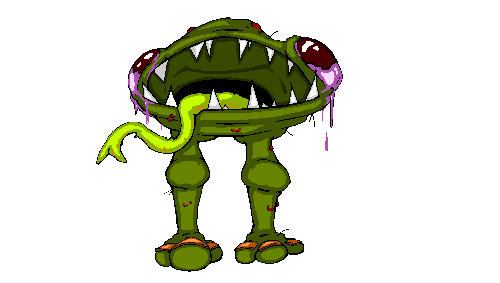
Notes: 3 YEARS! 3 years and countless near-death encounters spent trying to hunt this thing and it tasted BAD! I HATE this creature with a passion!
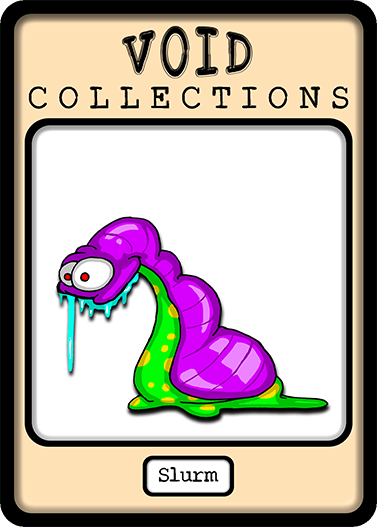
Description
No brain, no thoughts, no worries. A carefree slurm glides along on a trail of its own slippery saliva, seeking sweets. Slurms are what they eat, and they feed solely on sugar. They'll dissolve and absorb the stuff wherever it can be found. Their shiny, bouncy bodies are formed from a solid jelly-like substance, with a flavor as bold and bright as it is colorful.
Sentient creatures quickly recognize them as delicious. Luckily, their gummy bodies have no organs, and no weak points. Take a bite of a slurm and it simply reforms. Bifurcate a slurm, and it's two slurms! Reproduction is mostly accidental, but it's in the interest of those who enjoy their sweet-and-sour taste to multiply them. Though they have no cares aside from seeking food, they can become entranced by the sound of music, which causes them to bob and wiggle delightfully - and makes them almost too cute to eat! Almost.
Slurm
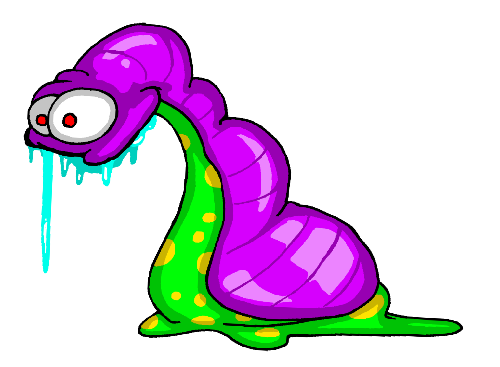
Notes: Do a favor for the ecosystem and eat some Slurm. Go ahead, they literally cannot stop you and they don’t want to! Don’t tell your dentist.

Description
Ever wanted to fit in? Dreamed of being like everyone else? Never felt like you could just be... normal? This creature never figured it out either! As hard as it tries, a norble remains easy to single out in a crowd. The norble itself is just a pair of eyeballs that secrete a body of jelly. Driven by a strong attraction to social interaction, a norble morphs its jelly body to imitate another creature's appearance, mannerisms, and vocalisations. But with limited mass, color and texture, the imitation is not very effective, and it never quite manages to speak a language. The end result is just kind of awkward.
A norble first identifies the "coolest" creature in a group. It then follows them around incessently, doing its best impression. This tends to kill whatever vibe the group had cultivated. One would think this would discourage the norble's behavior, but the opposite is true: as the discomfort rises, so does the norble's satisfaction. It grows in proportion to the harshness of the vibe. Once it has doubled in size, the norble abruptly undergoes mitosis... and it's not pretty. The resulting spawn go their separate ways. If its interruption caused such a negative response that it finds itself in danger, a norble may split prematurely to escape. Ironically, the shared trauma of witnessing this disgusting event often becomes a bonding experience for its "victims".
In an effort to keep them from harshing vibes exponentially, an attempt was made to place them on the moon. Their jelly is known to have fallen to earth, though many dispute the origins of "moon jelly".
Norble
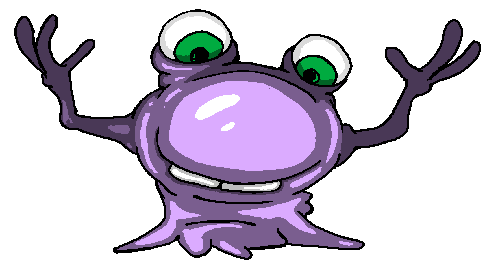
Notes: You can’t eat Norble unless it’s imitating something edible. It all tastes the same though, and that flavor is... old marshmallows.
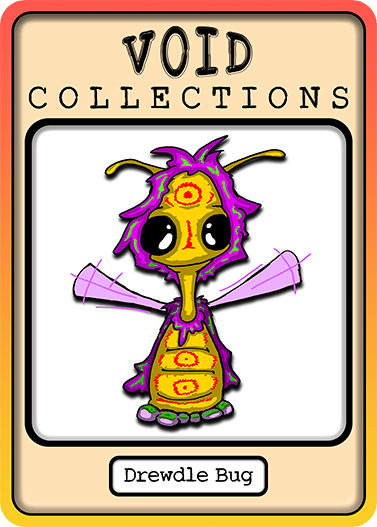
Description
Drewdle bugs dwell as tight-knit communities in drewdle bug dens. Though they could easily make their home in any caves, tunnels, or rocky crevices, they want to be where other beings are, and will seek out hives hewn by others. Trails of glowing fungus will begin to appear on the walls, and soon, strangely colored globes of light wink in the depths of the dark, indicating that the drewdle bugs have moved in. As the years go by, their presence enriches the area around the den and encourages the growth of the distinctive void tree.
These esoteric creatures, with wings that make a rhythmic humwhistle as they fly, are capable of cleansing bad vibes. Species that can attract drewdle bugs to live nearby tend to form well-balanced societies. There's an extra benefit for creatures who can use it wisely: Drewdle bug rituals, which involve much dancing, use the negative energy they have captured as a key ingredient to produce psychedelic honey. The honey comes in many colors and intensities, all with a telltale opalescent sheen. Consuming the honey - in moderation - creates a transcendant psychoactive experience. For some it is transformative, and for others, just a good time. One must barter with the drewdle bugs to obtain their honey. Eschewing traditional currency, they prefer to collect treasures, particularly ones that are shiny or sharp: ornate knives and freshly minted coins are popular choices.
Though the tiny drewdle bugs would be easy prey for other creatures, predators beware: eating one is likely to result in the irrevocable loss of your grip on reality. Besides, drewdle bugs are a singular family, and fiercely dedicated to one another. Mess with one, and you'll summon a drewdle swarm, bristling with cherished sharp objects.
Drewdle Bug
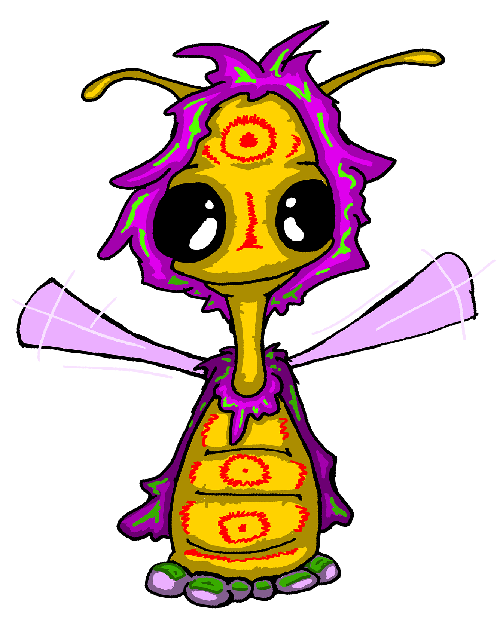
Notes: Getting your hands on this stuff is tricky, but totally worth it! I had to boogie down beyond what I thought was even possible, and I’m sure I kept dancing after eating the honey (probably with less finesse). Also, I must shout out my brainspider backup dancers; without y'all, I would never have completed the ritual.
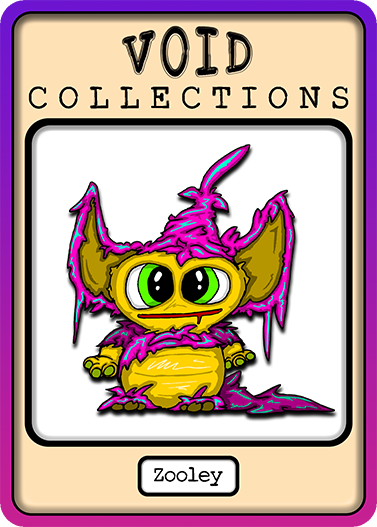
Description
There's something satisfying about giving a zooley what it wants. They identify objects with a sparkle of cleverness, and a warbling purr that sounds almost akin to a language. How cute, you might say. It's talking! Whatever you were just holding seems to become an object of desire for a zooley, who will coo and squirm and bat its eyes. But the objects it truly covets are those you love the most: the cup that fits your hand just right, your coziest blanket, a fresh batch of homemade blueberry muffins. It can tell. Any reluctance only increases its desire. And when you give it up, a zooley lights up with glee. A happy wiggle-dance of delight breaks out on its way to stash the object in its nest of coveted treasures. Soon enough it will be back to look for something else, and you'll happily hand it over.
That is, until it wants something it can't have.
Much like a human toddler, a zooley denied is a force to be reckoned with. When sheer cuteness isn't enough to get you to give up that one spoon that you use only for ice cream, these creatures will do everything in their power to force your hand. Its gentle noises turn to growls of frustration. In the blink of an eye, it's across the room, threatening a fragile object. Before you know it, your family pet is on its way to being flushed down the toilet. And if all else fails, the zooley bares a set of needle-like teeth that it otherwise keeps concealed in its squeaky little gums. Shaking off a zooley is possible, but difficult, and you'll find yourself covered in punctures and scratches by the end.
If a zooley gets comfortable, it won't be long before its family moves in, and your stuff moves out. The weak of will can remain in the clutches of a zooley for some time, living in a mixture of vicarious joy and subtle fear. Still, the more you get to know them, the stranger they are. Behind their two eye sockets is really one large eyeball. It creates an irressistible cross-eyed gaze when they look directly at you, but catch them looking out of the corner of their eye, and it's a bit... unsettling.
Zooley

Notes: Zooley meat steals all of the flavor from everything else on the plate, the table, and the fridge. So thanks to my Zooley, I learned that my cottage cheese was spoiled. Too bad all of the other foods are stripped of their flavor.
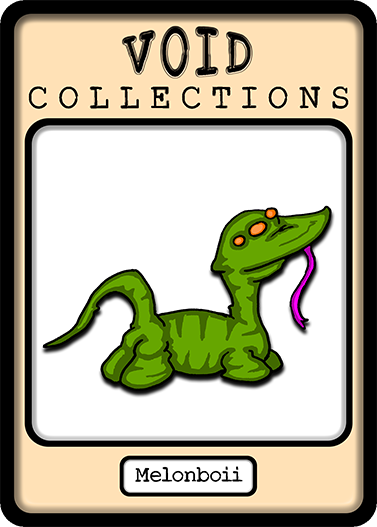
Description
Nested under the sprawling leaves of your garden vegetables are more melonboii than you think. They are happy to feed on whatever threatens the foliage they live in, from slugs and insects to birds and squirrels, and their population rises in proportion to their success. Their bright orange eyes extend on motile stalks, giving them excellent vision in all directions and all levels of light, and allowing them to quickly retract when threatened. To capture their prey, they needn't move much; their long sticky tongue darts out to snatch small creatures at a distance.
A crop of melonboii will cross-pollenate with the plants around them, taking on hints of flavor from surrounding fruits and vegetables. Dedicated cultivators can work wonders with these acquired tastes, but if they're left to run wild, you can wind up with some culinary disasters. Up for the challenge? All that's left is to catch them at their juiciest.
As they ripen, their hindquarters become increasingly rotund, glistening with an appetizing luster. A healthy, well-fed adult melonboii will begin to nuzzle down into the dirt, presenting its crop as it prepares to root. Keep an eye on those melons! Wait too long, and it will begin to root, ruining its flavor. Once it burrows into the soil of your garden bed, it will send out runners that sprout new patches of young, and decompose quickly to fertilize the soil.
Melonboii
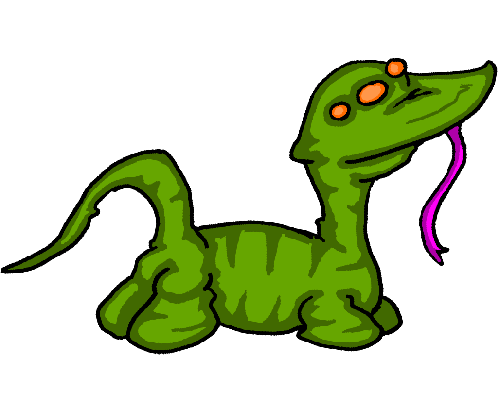
Notes: This is the opposite of that impossible meat stuff. Have you ever had a steak that tastes like cauliflower? And I think it’s just as healthy as veggies. Now I can eat twice the amount of meat and still cover all my food groups, take that vegans!
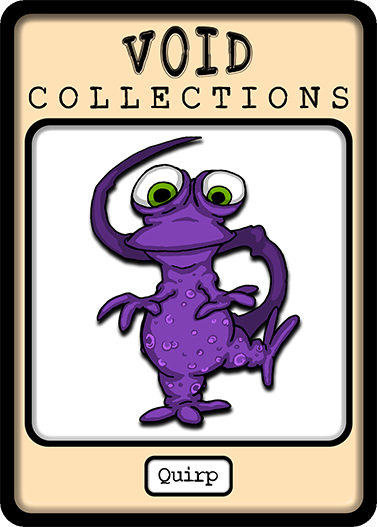
Description
pending
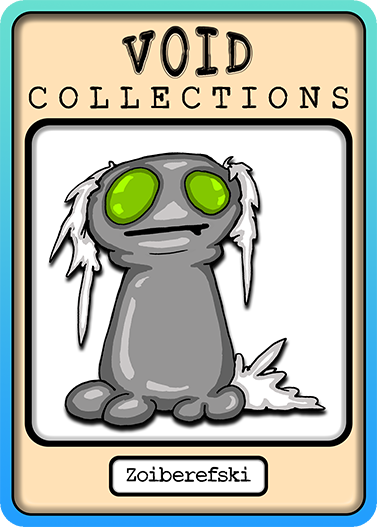
Description
pending
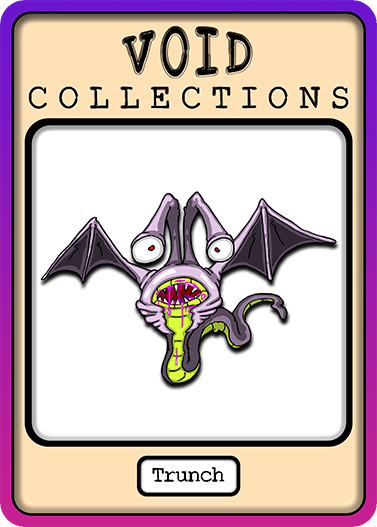
Description
pending
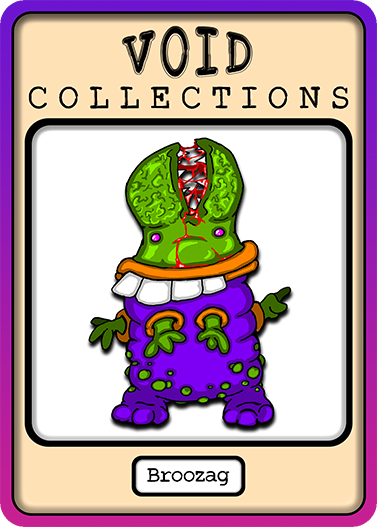
Description
pending
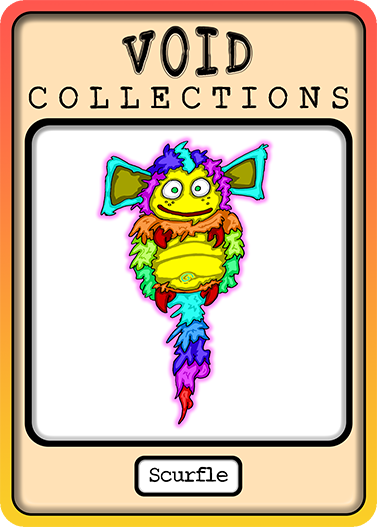
Description
pending
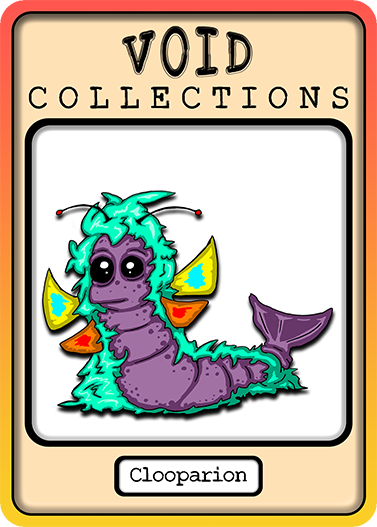
Description
pending
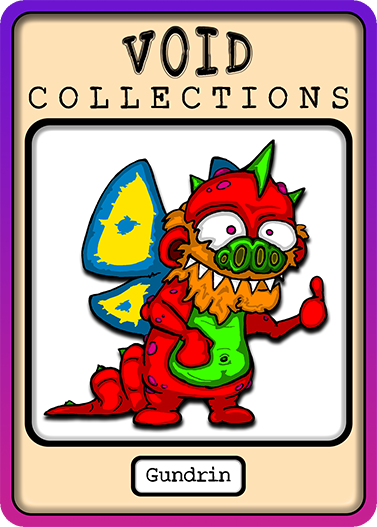
Description
pending
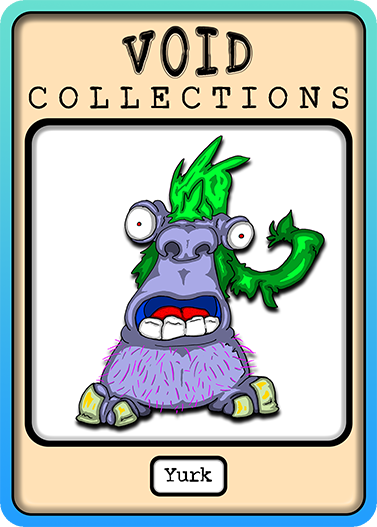
Description
pending

Description
pending
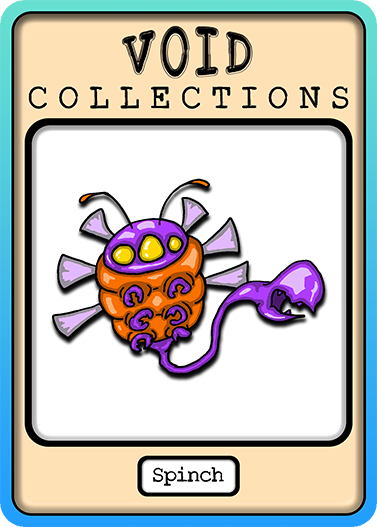
Description
pending
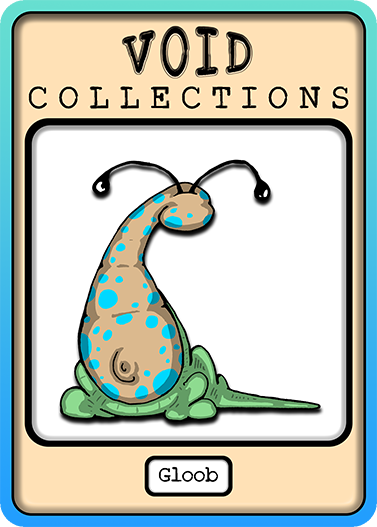
Description
pending
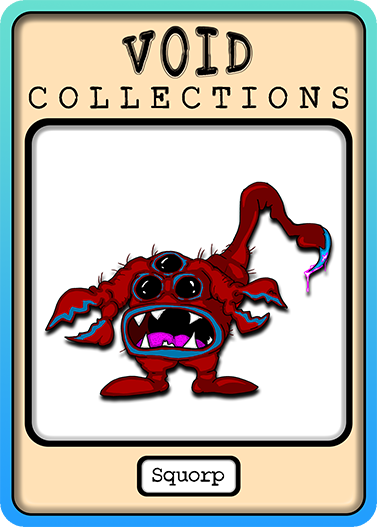
Description
pending
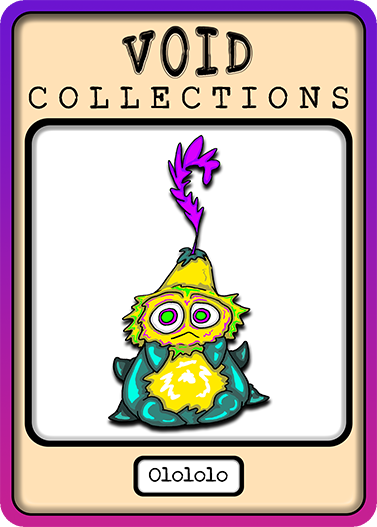
Description
pending
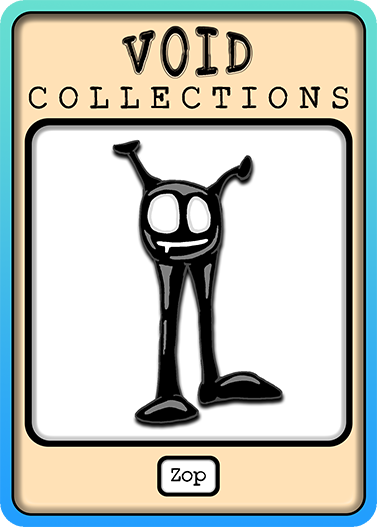
Description
pending

Description
pending

Description
pending

Description
pending
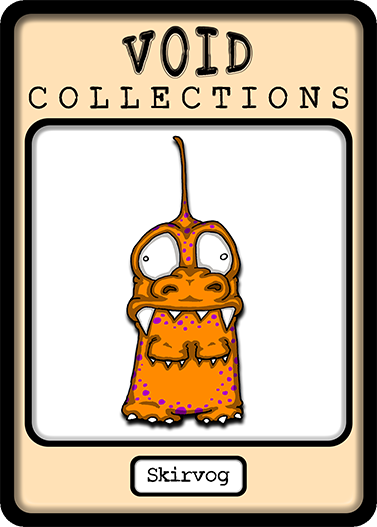
Description
pending

Description
A rolling stone gathers no moss, but rolling mouphs gather the beat. The leathery skin of these boulder-like creatures is sensitive to vibration, giving them the unified synaesthetic sense by which they navigate their world. To this effect, mouphs echolocate by producing rhythmic music in a wide variety of styles and tempos. Their unique style expresses their vibe, which other mouphs are listening for.
Lone mouphs will roll about with abandon, beat-boxing away, until they encounter other mouphs. Those with similar BPM will attract one another, blending styles to amass in ""polyrhythms"". If two polyrhythms meet, however, a beatbox competition ensues, and members of the losing team might follow the beat back to the winning troupe. Dissonance in a polyrhythm isn't unheard of, and if one of the mouphs isn't feeling the vibe, they may just split off and go their own way.
Mouphs are typically plant eaters, but it takes getting something in their mouth for them to recognize whether it's food or not. This means that they can do increasingly more passive damage to an environment with size and appetite. Their jaws are very strong. Some objects could be completely destroyed - so consider what you've left outside if you hear beat-boxing on the breeze. That said, all it takes to deter these things is a brief cacophony of loud, obnoxious, arrhythmic noises.
Mouphs
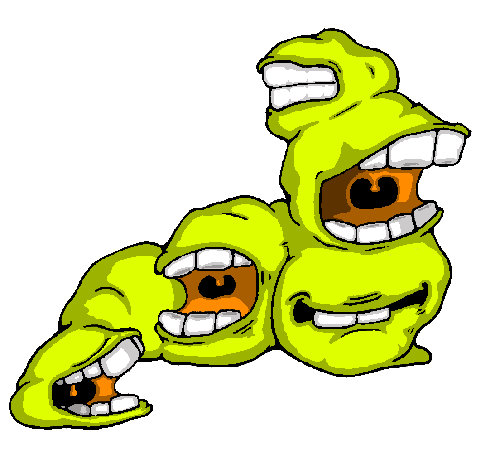
Notes: It’s some pretty normal meat for such an odd creature. The only weird quirk I could find was that the steak sizzles in a 13/8 rhythm.
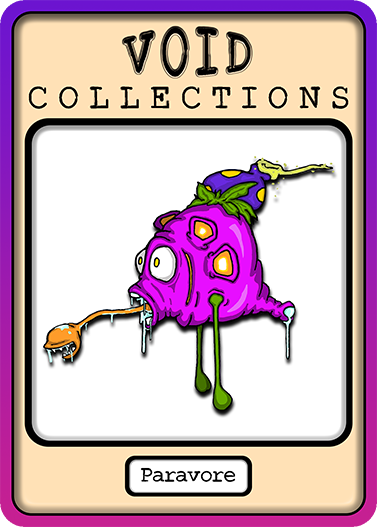
Description
pending
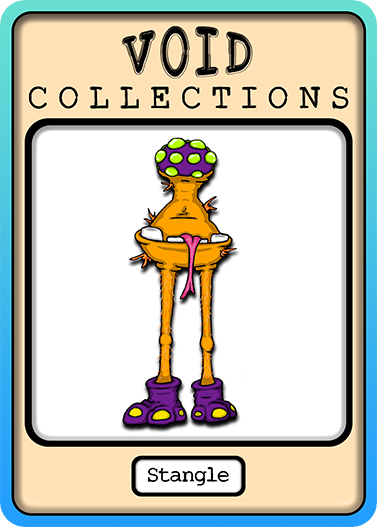
Description
pending
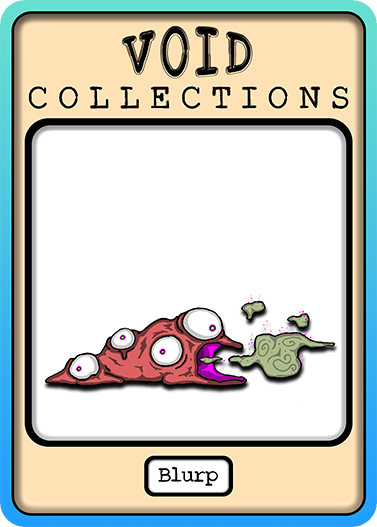
Description
pending

Description
pending
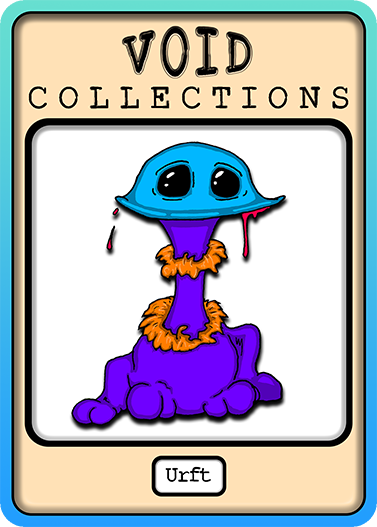
Description
pending
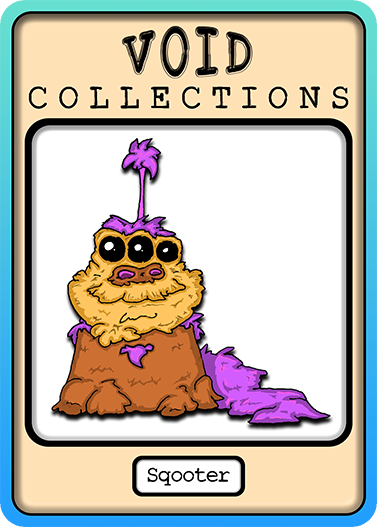
Description
pending
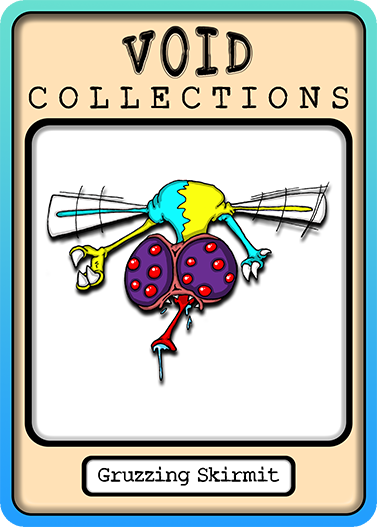
Description
pending
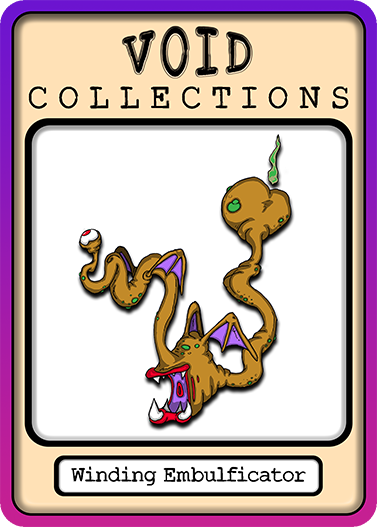
Description
pending
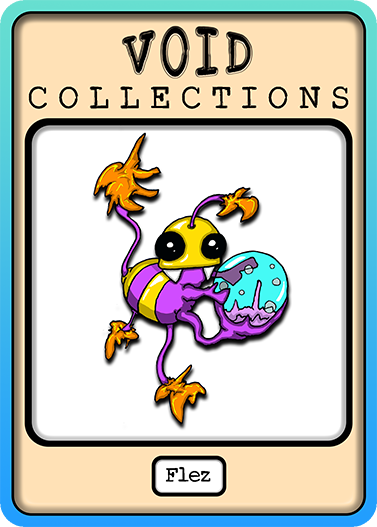
Description
pending
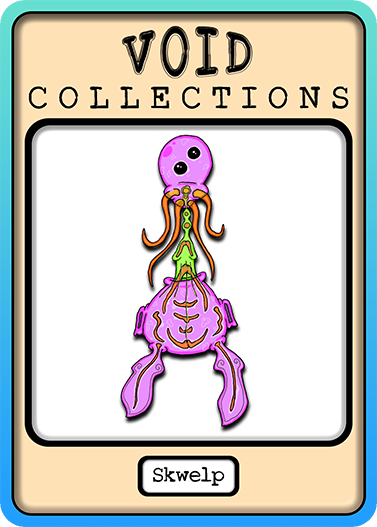
Description
pending
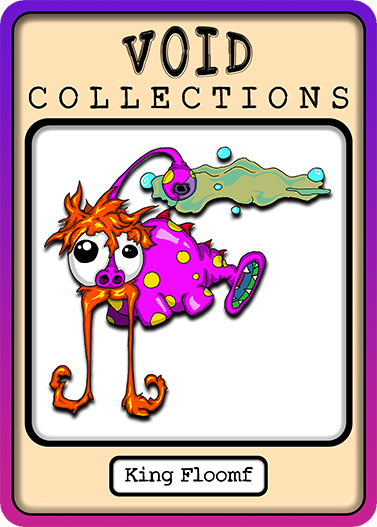
Description
pending
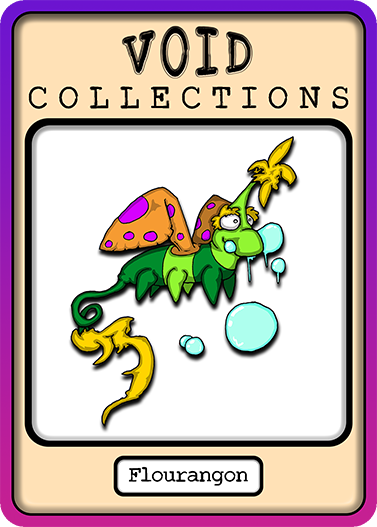
Description
pending
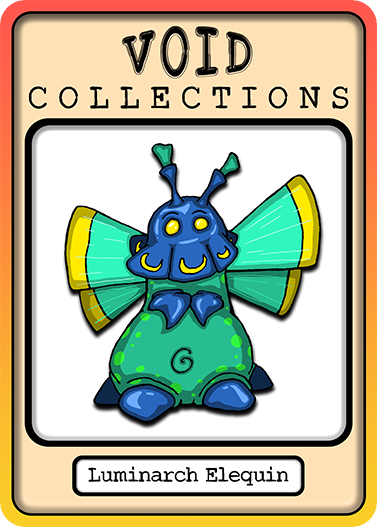
Description
pending
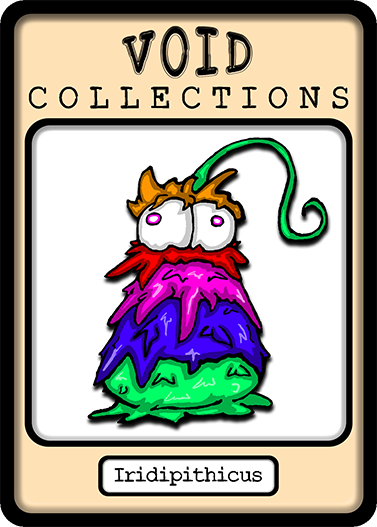
Description
pending
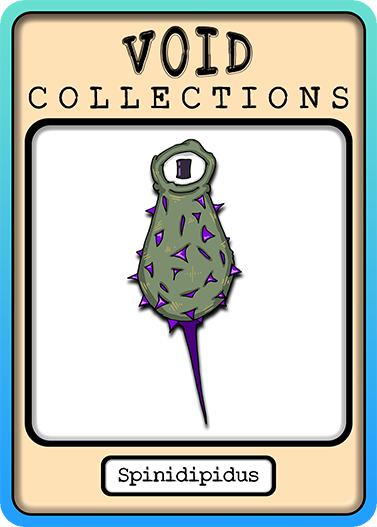
Description
pending
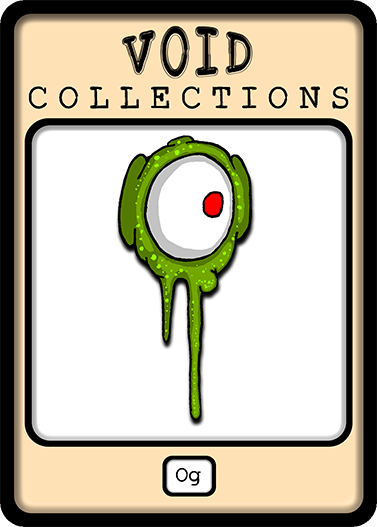
Description
pending
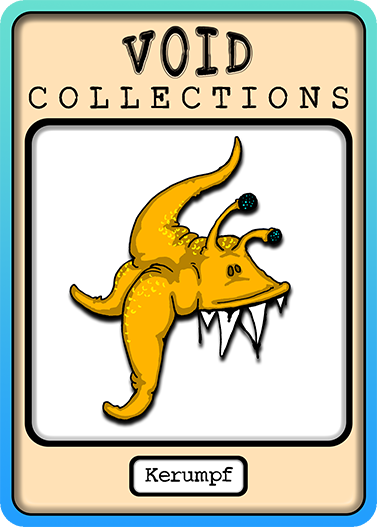
Description
pending
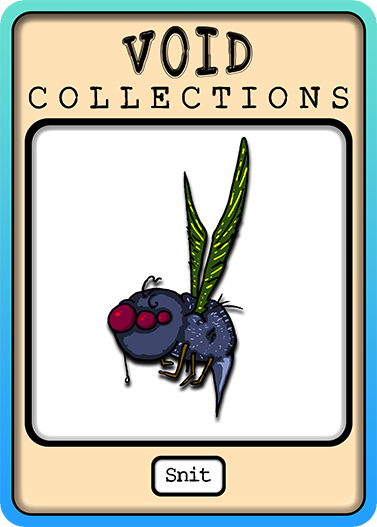
Description
pending
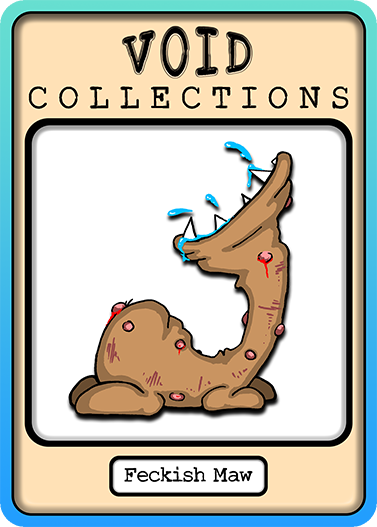
Description
pending
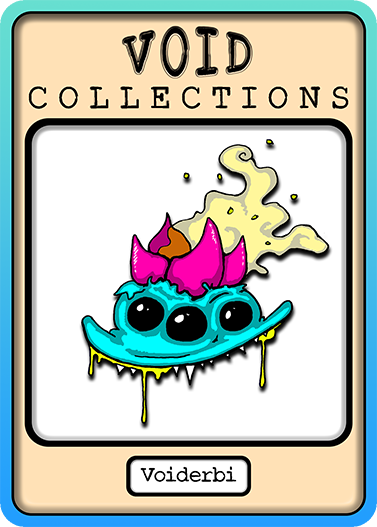
Description
pending
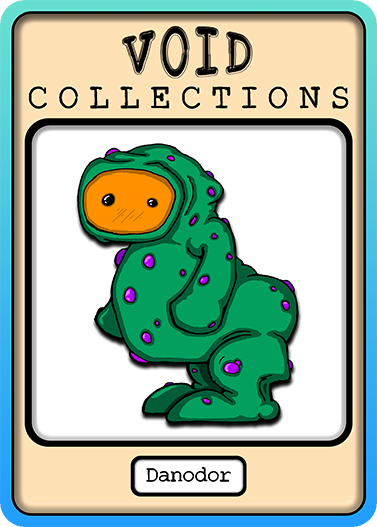
Description
pending
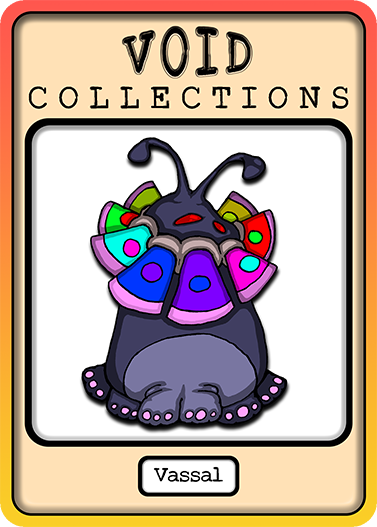
Description
pending
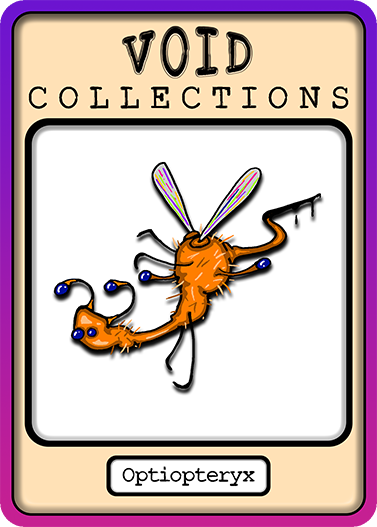
Description
pending
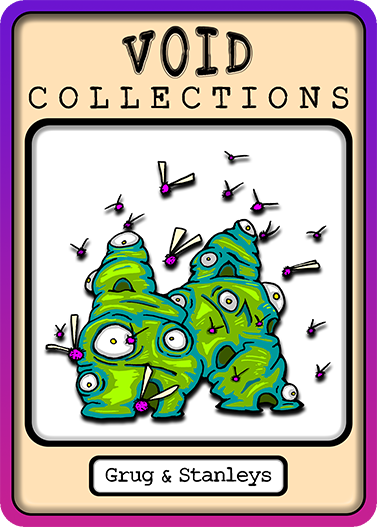
Description
pending

Description
pending
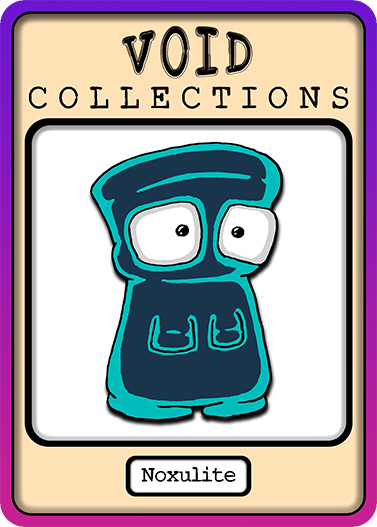
Description
pending
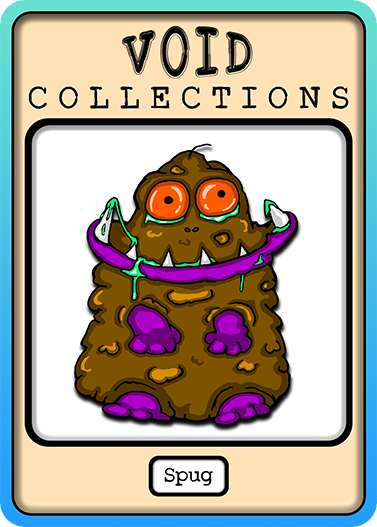
Description
pending
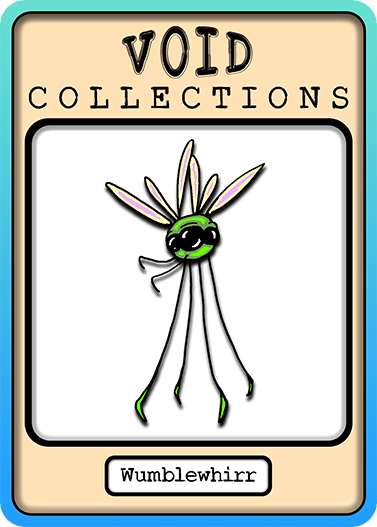
Description
pending
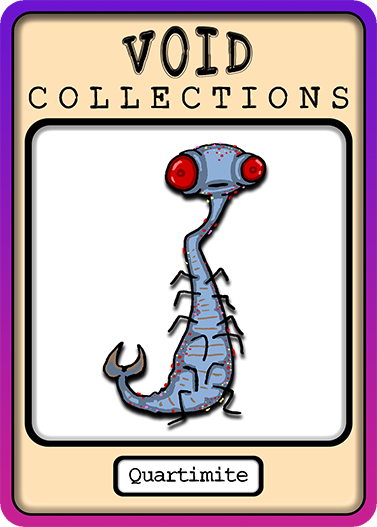
Description
pending
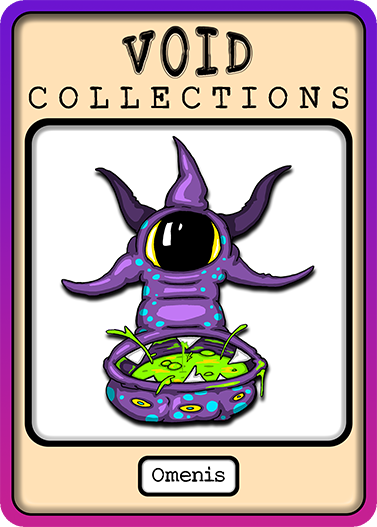
Description
pending
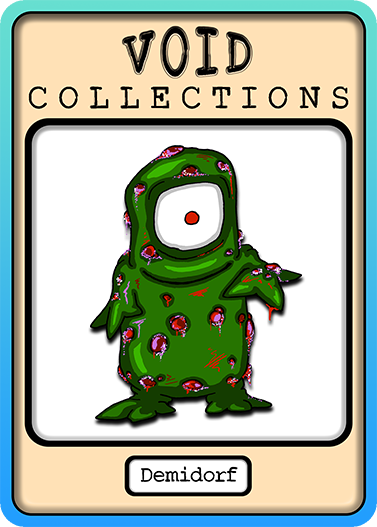
Description
pending

Description
pending
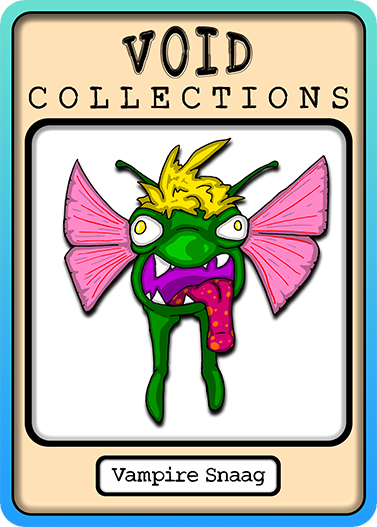
Description
pending
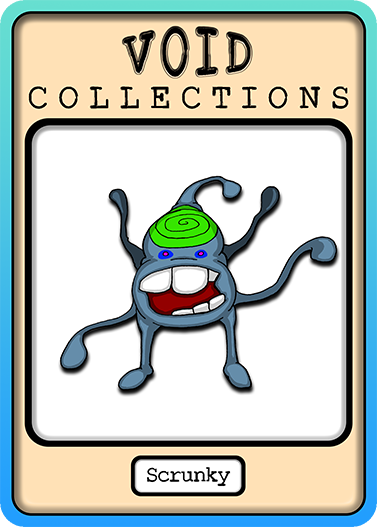
Description
pending
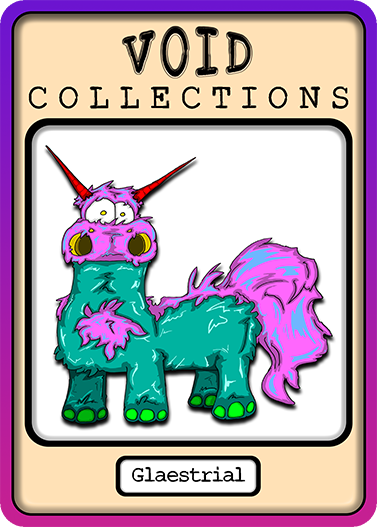
Description
pending
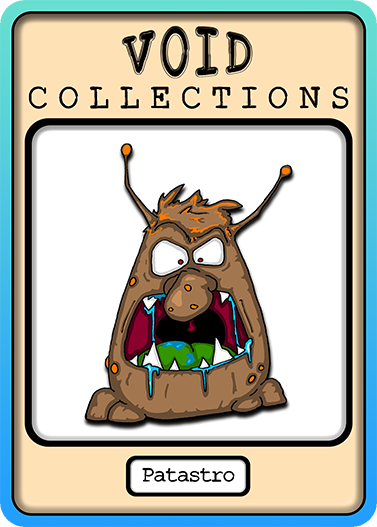
Description
pending
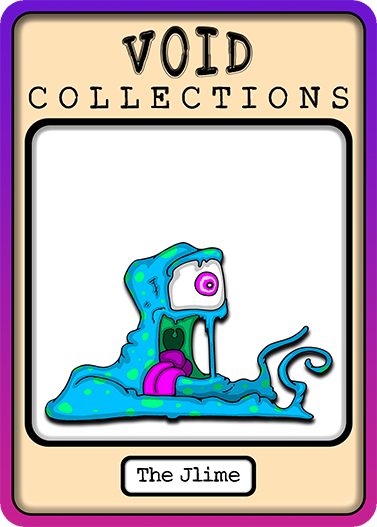
Description
pending
